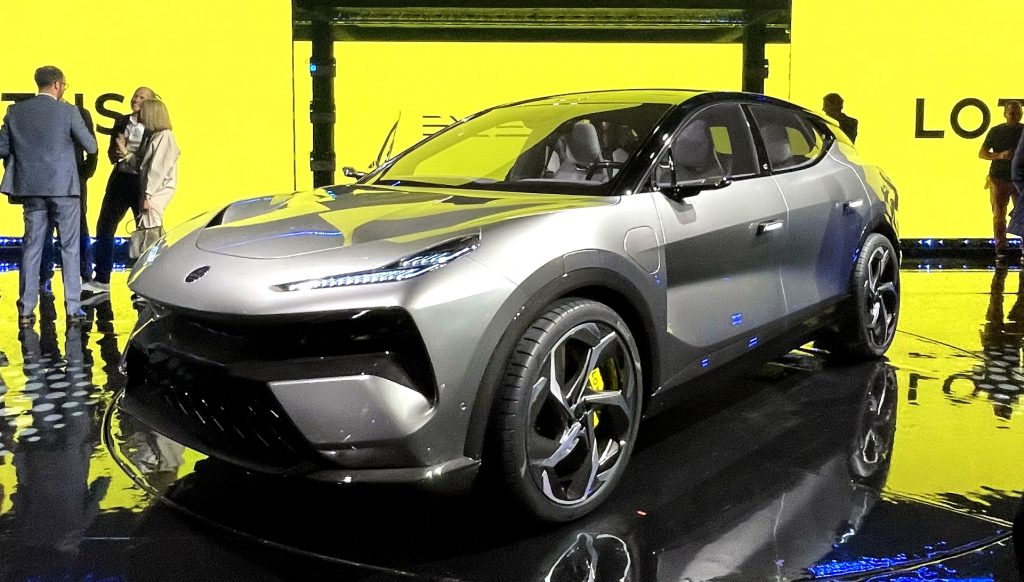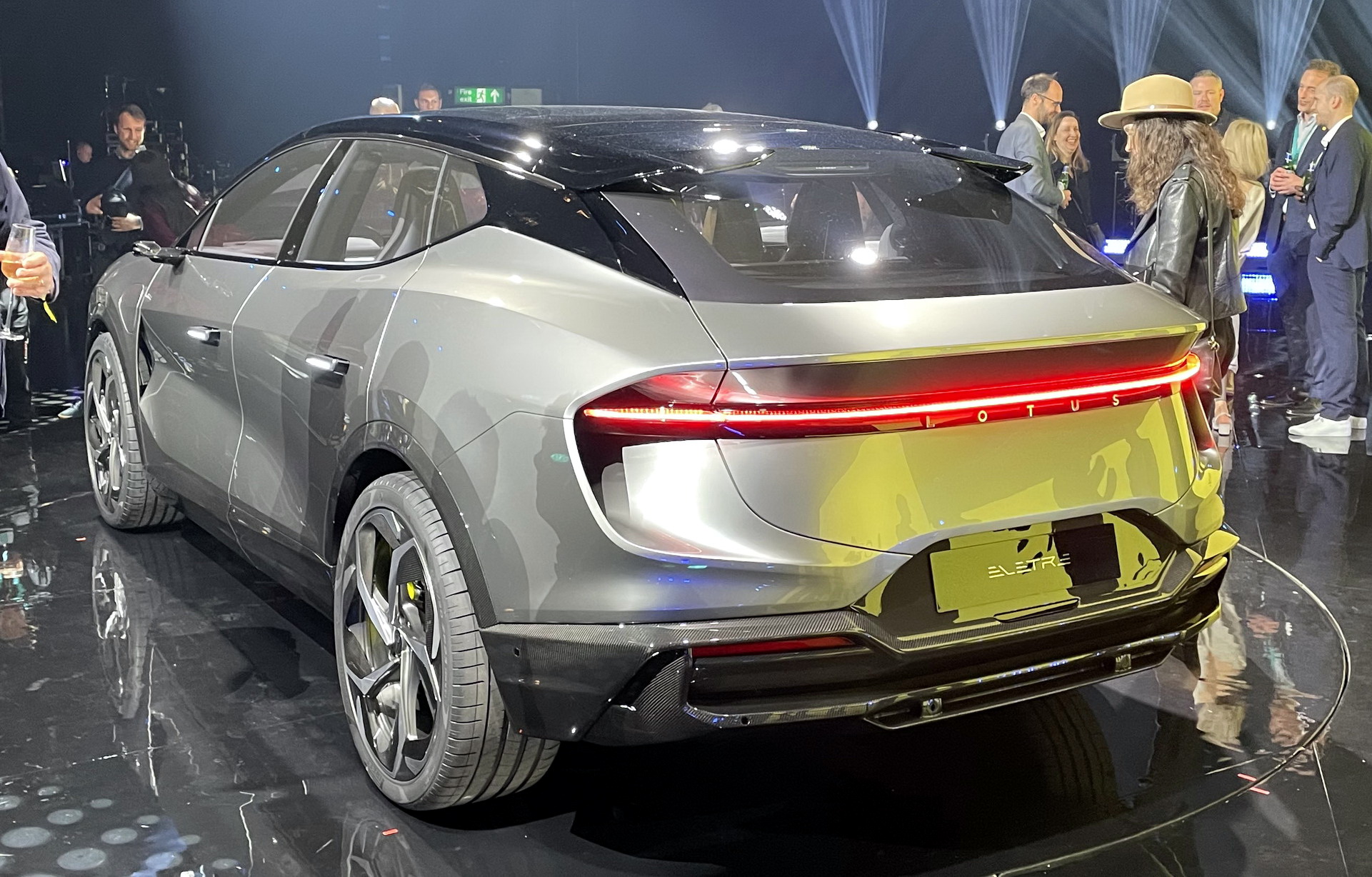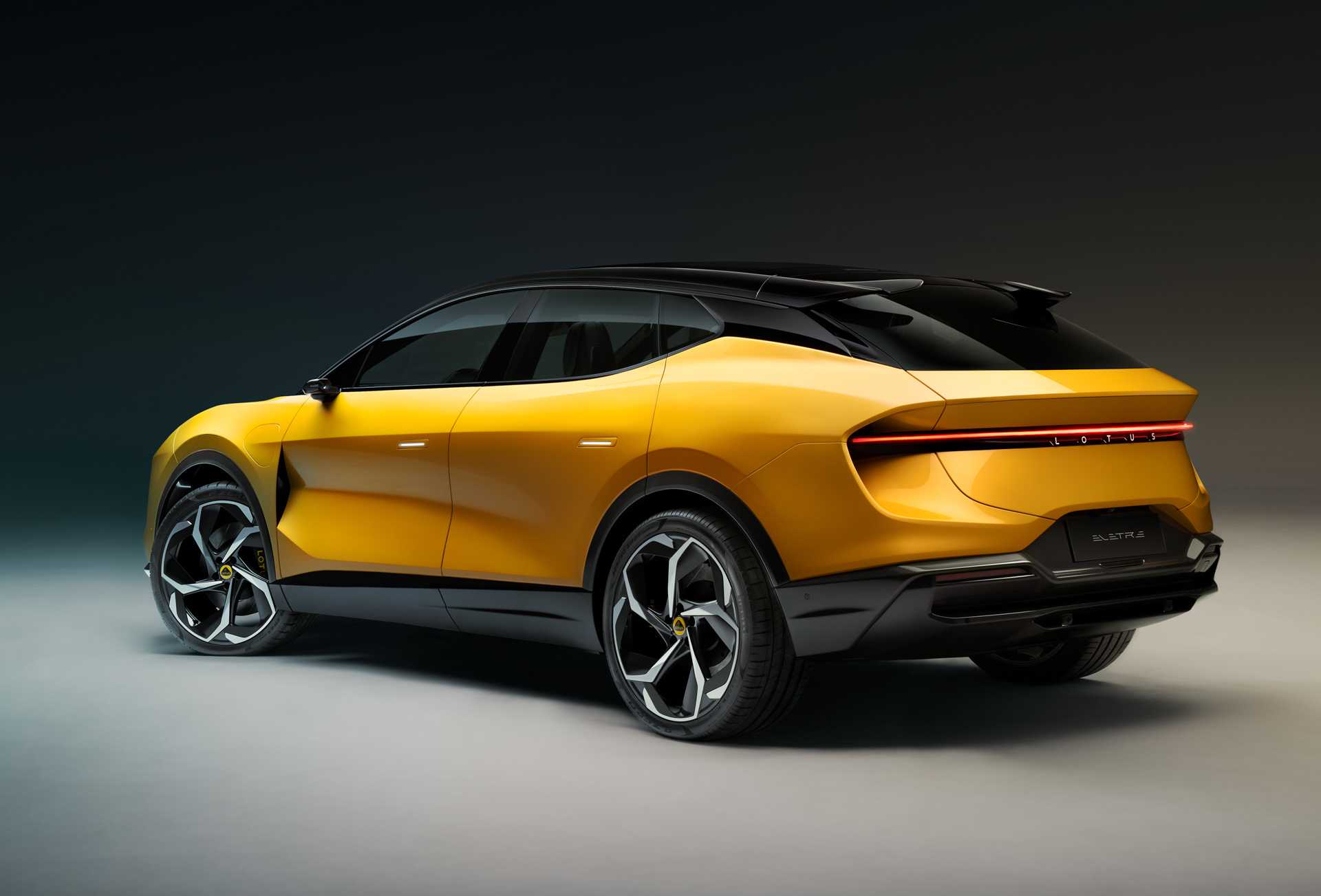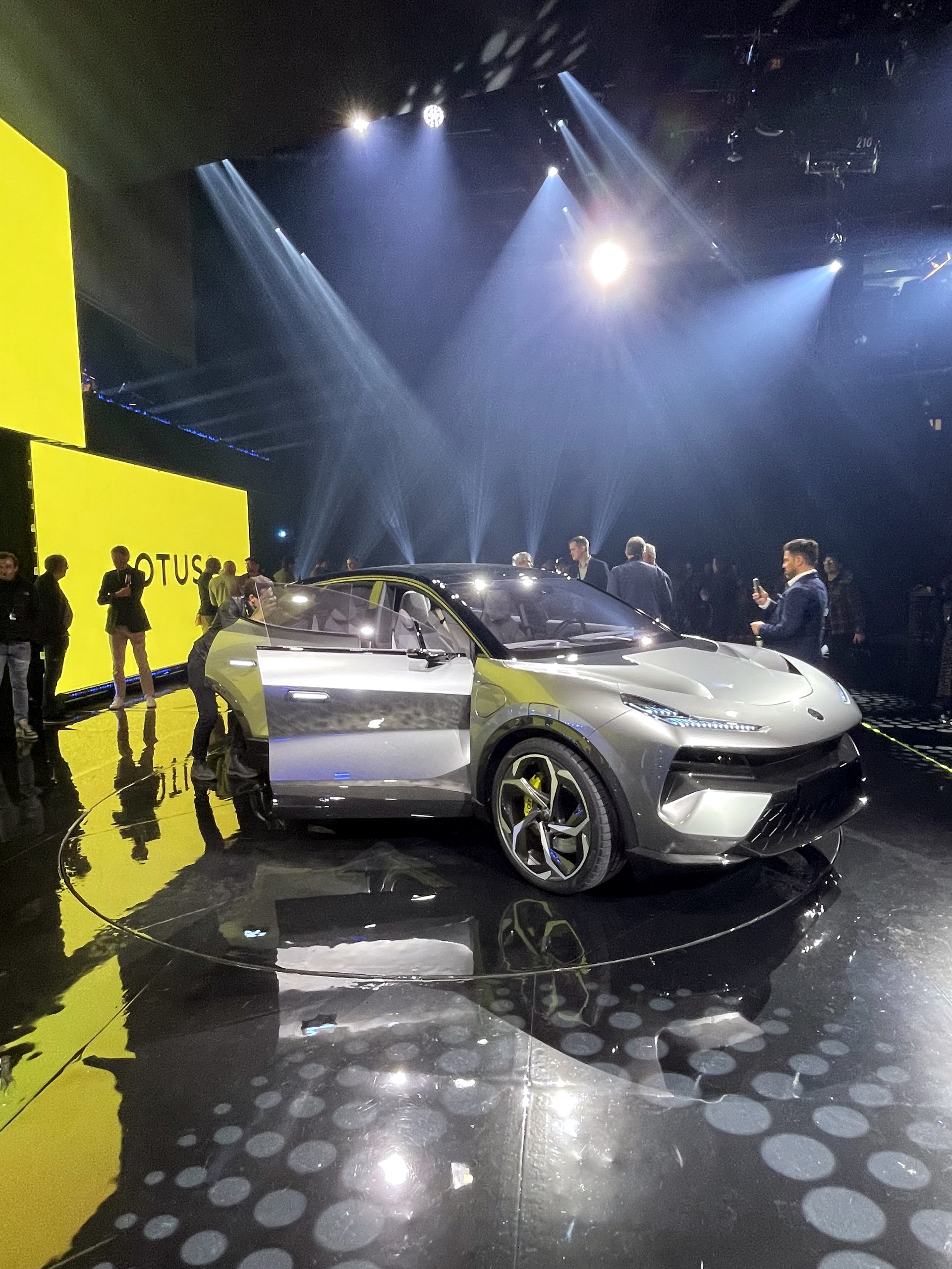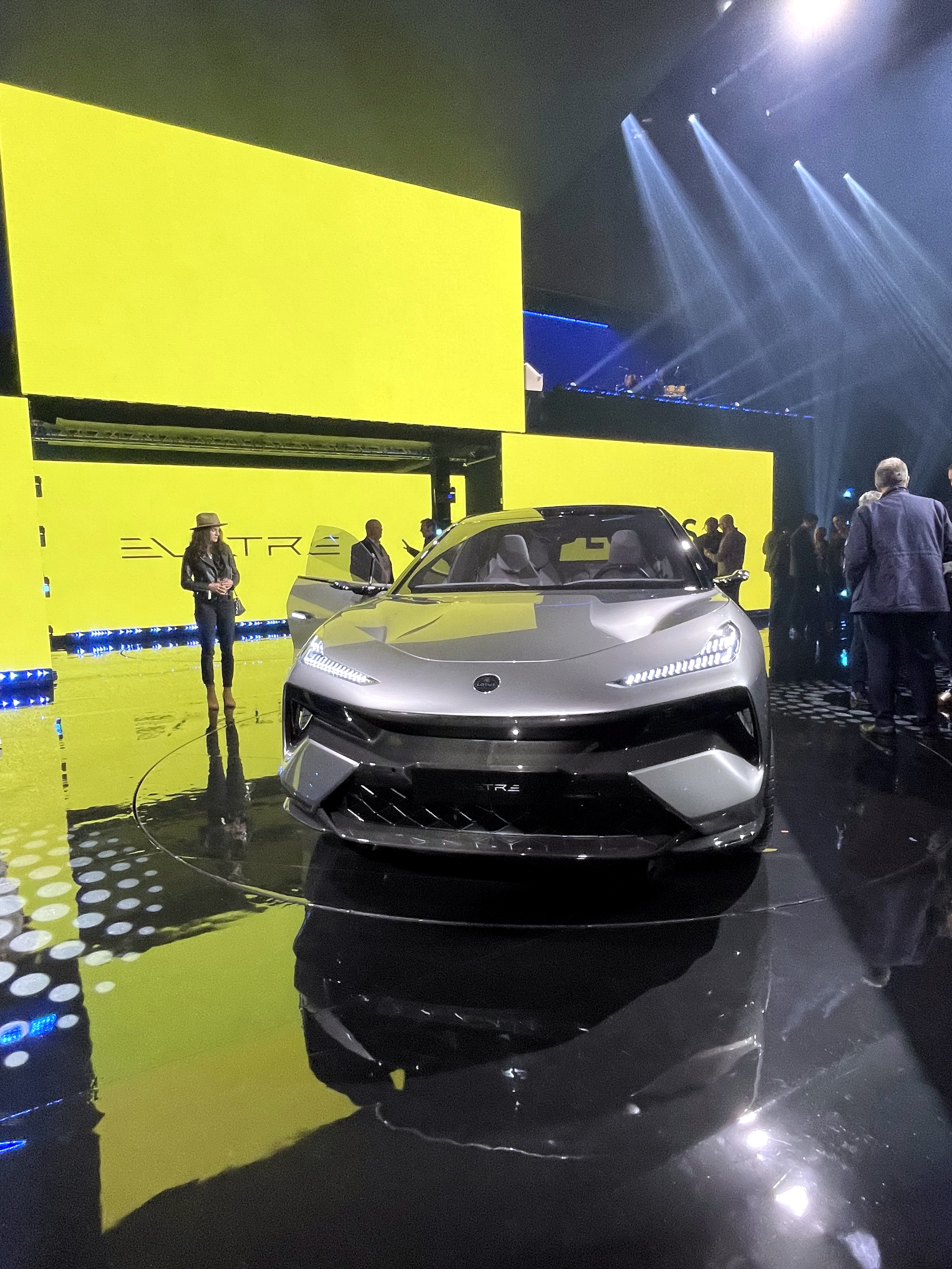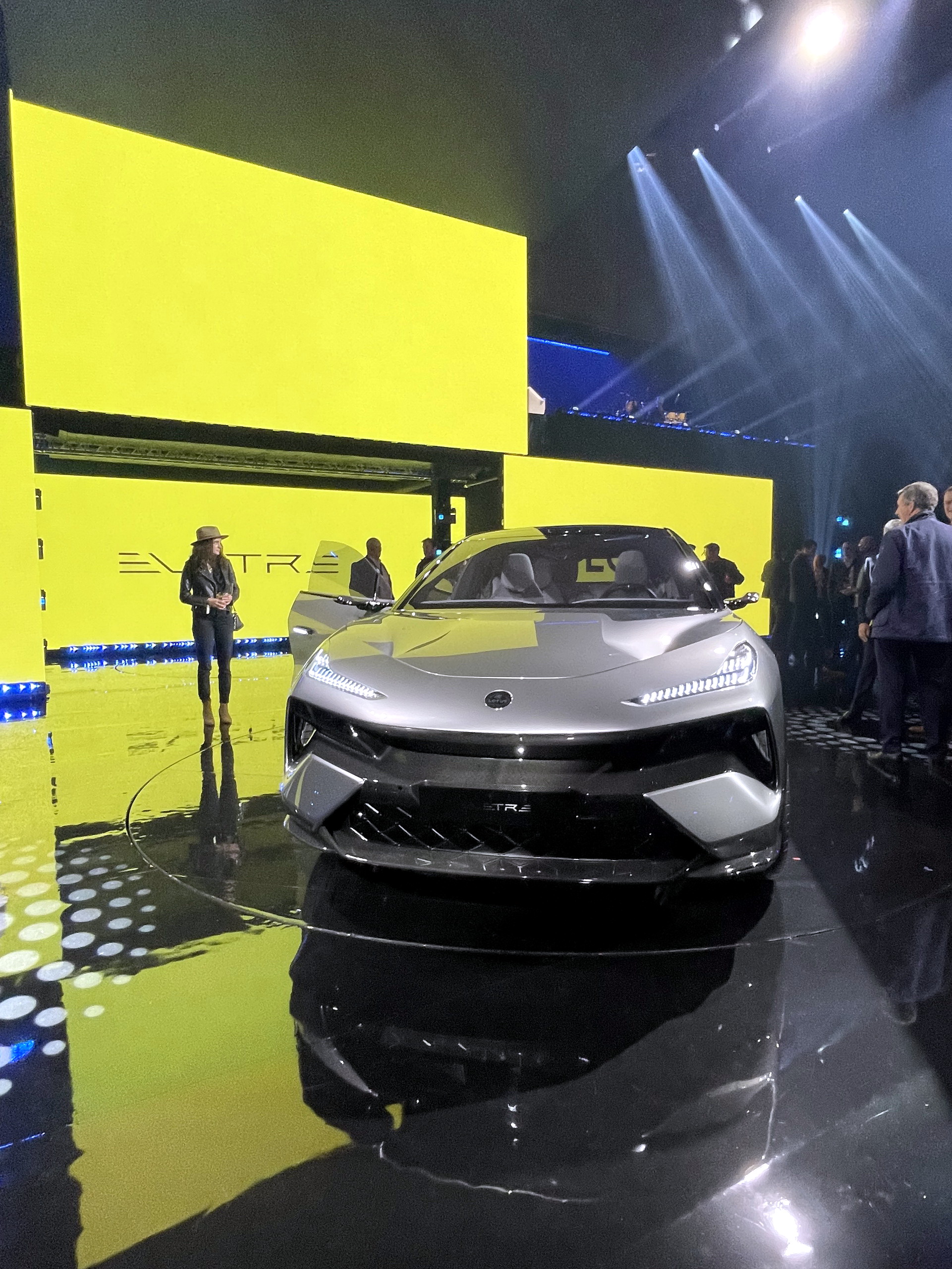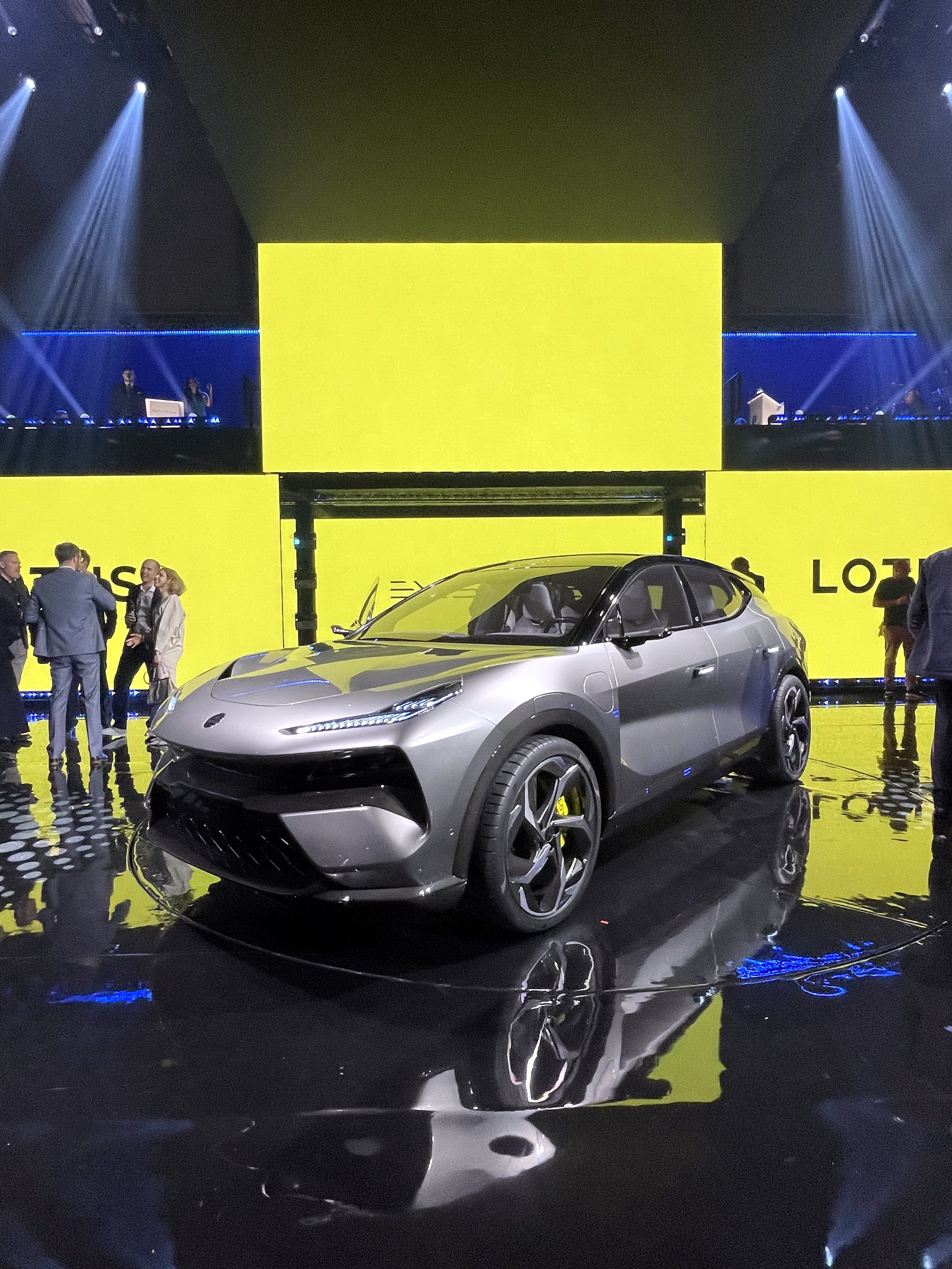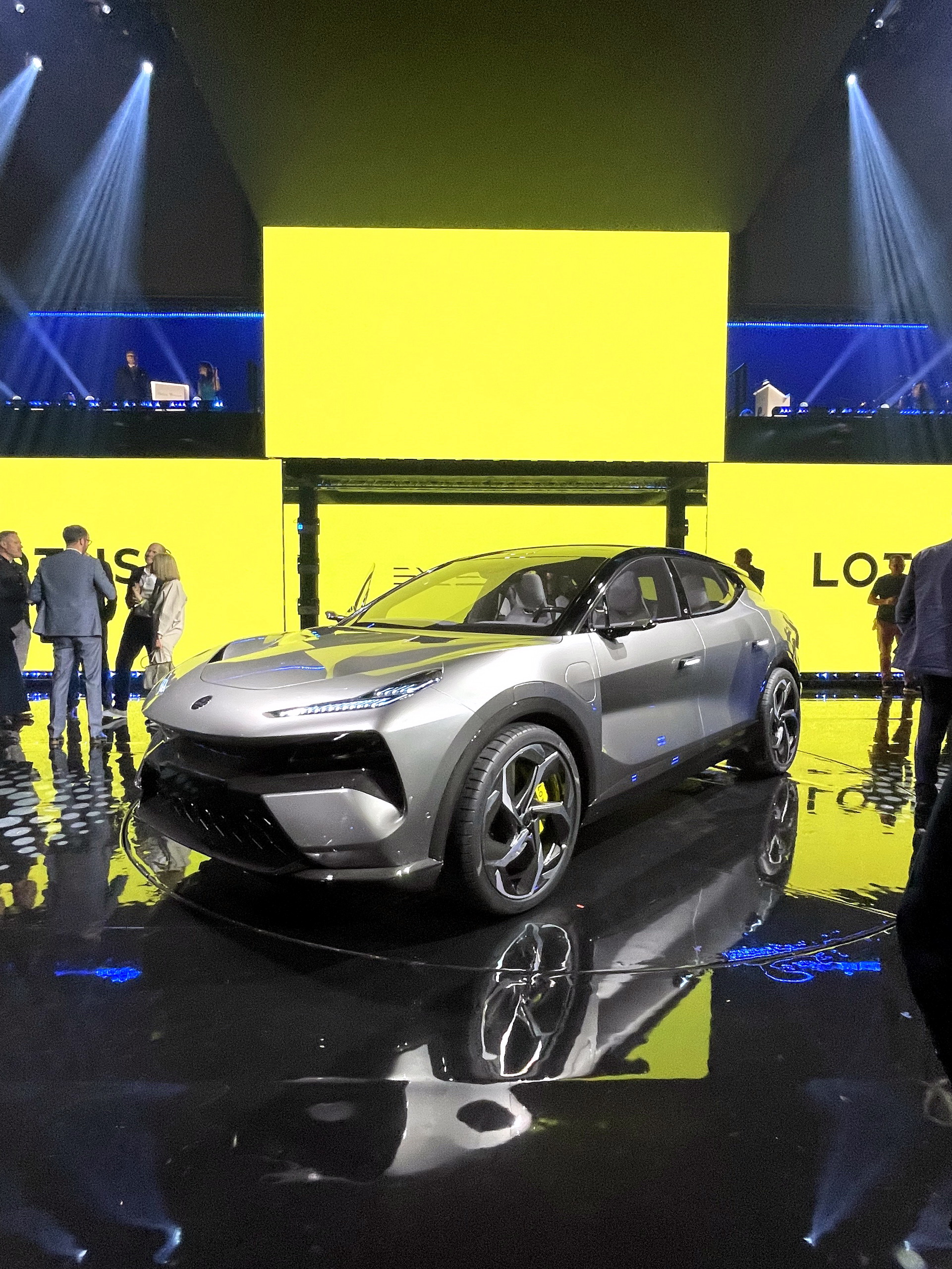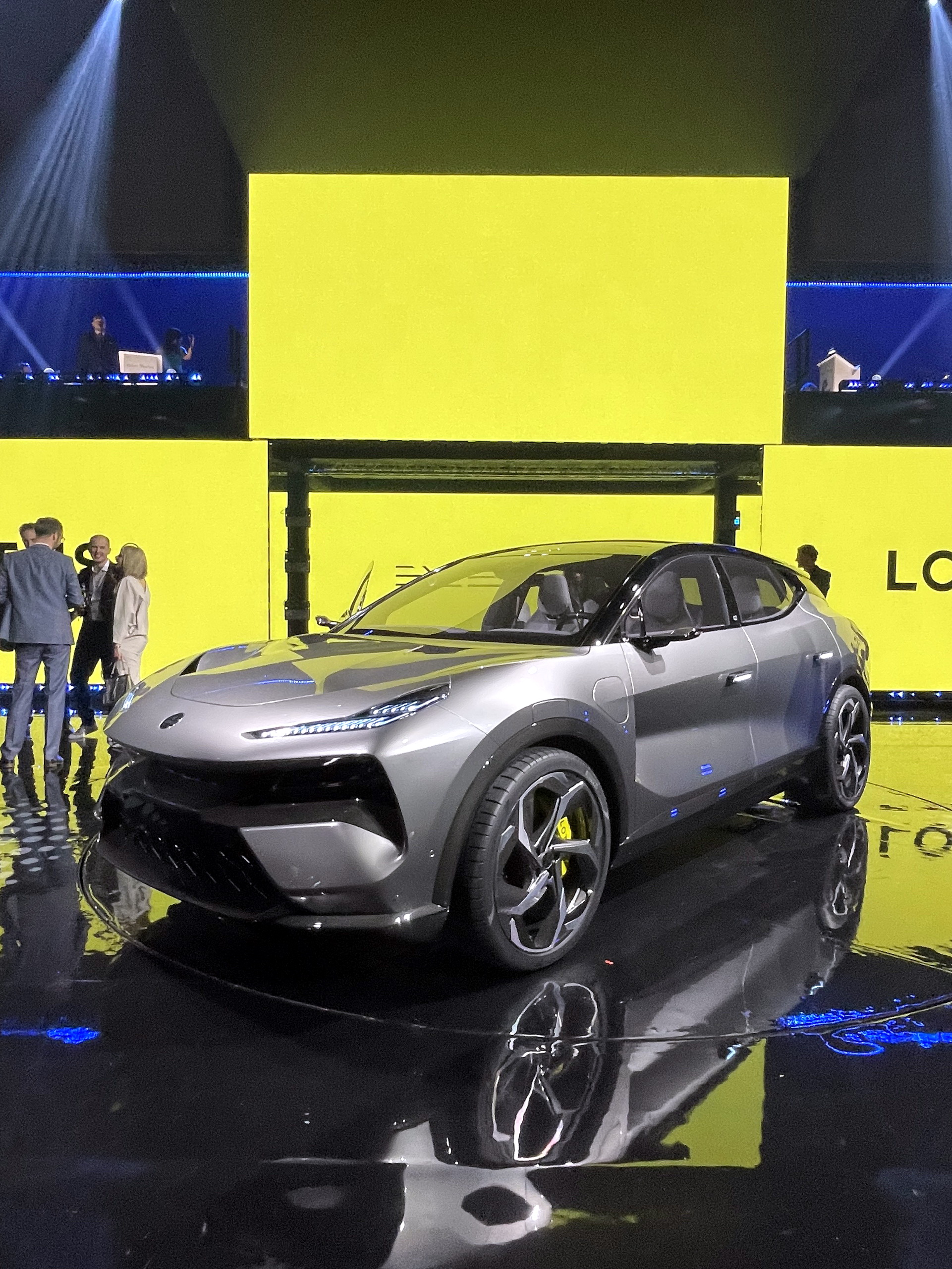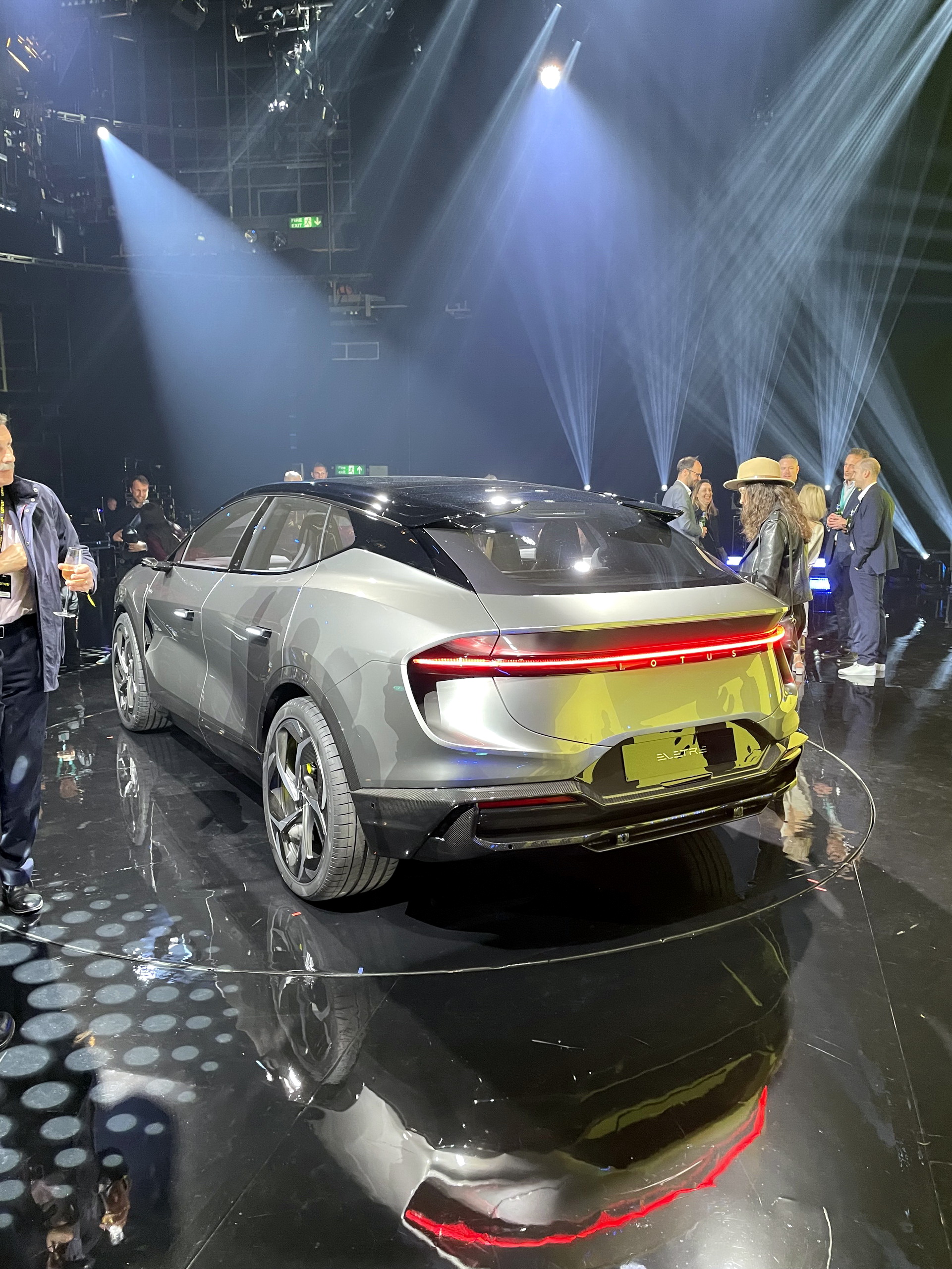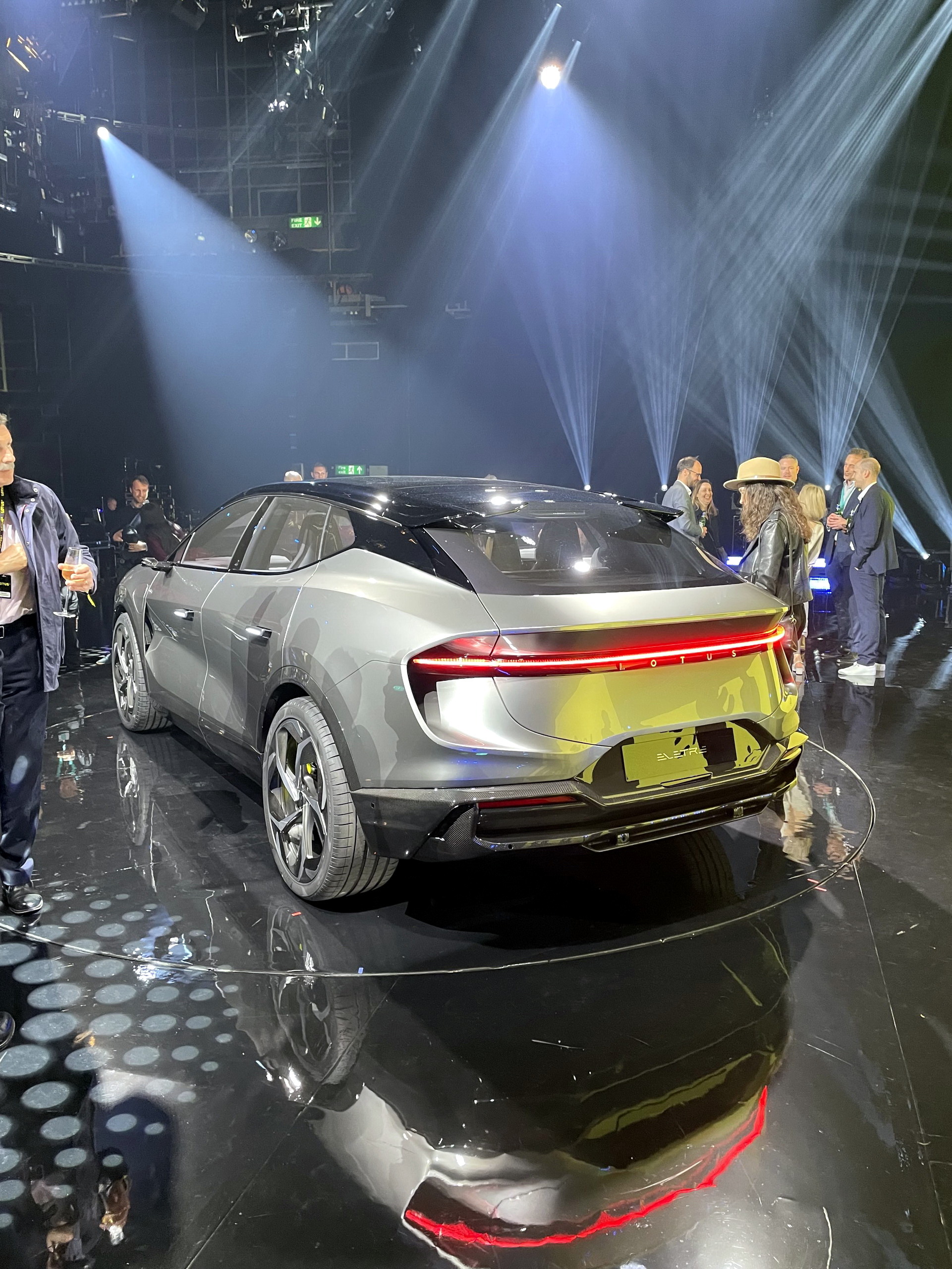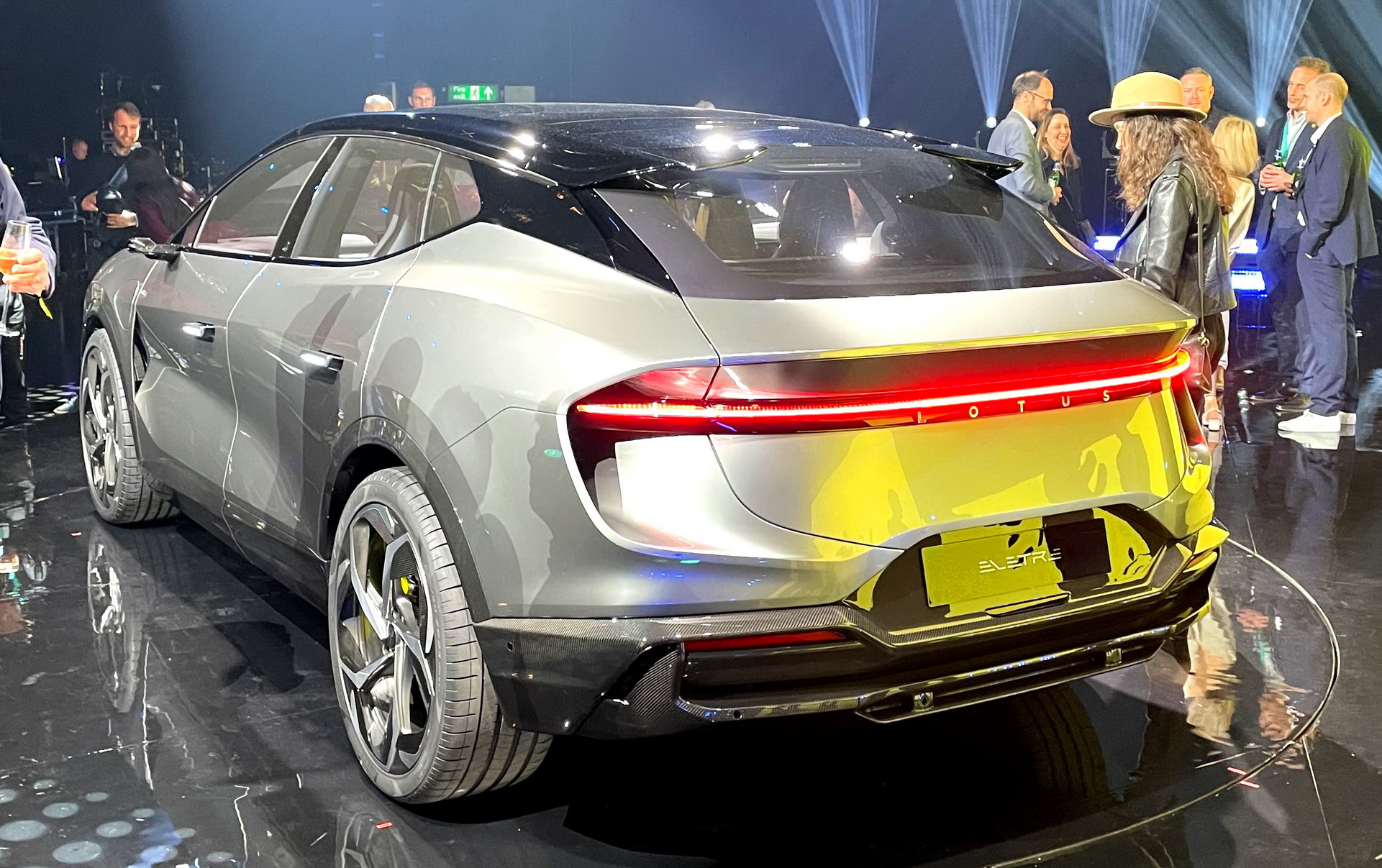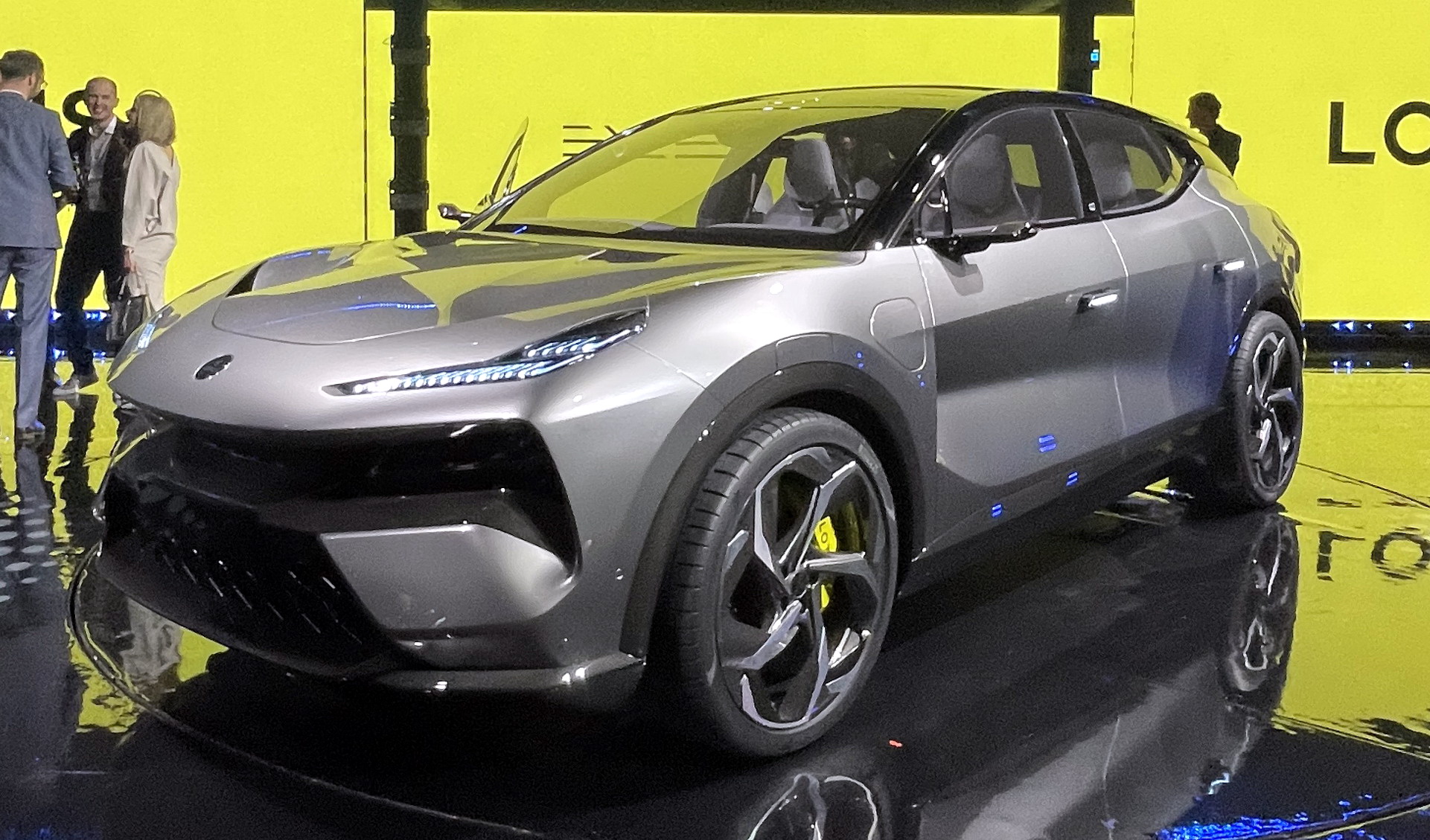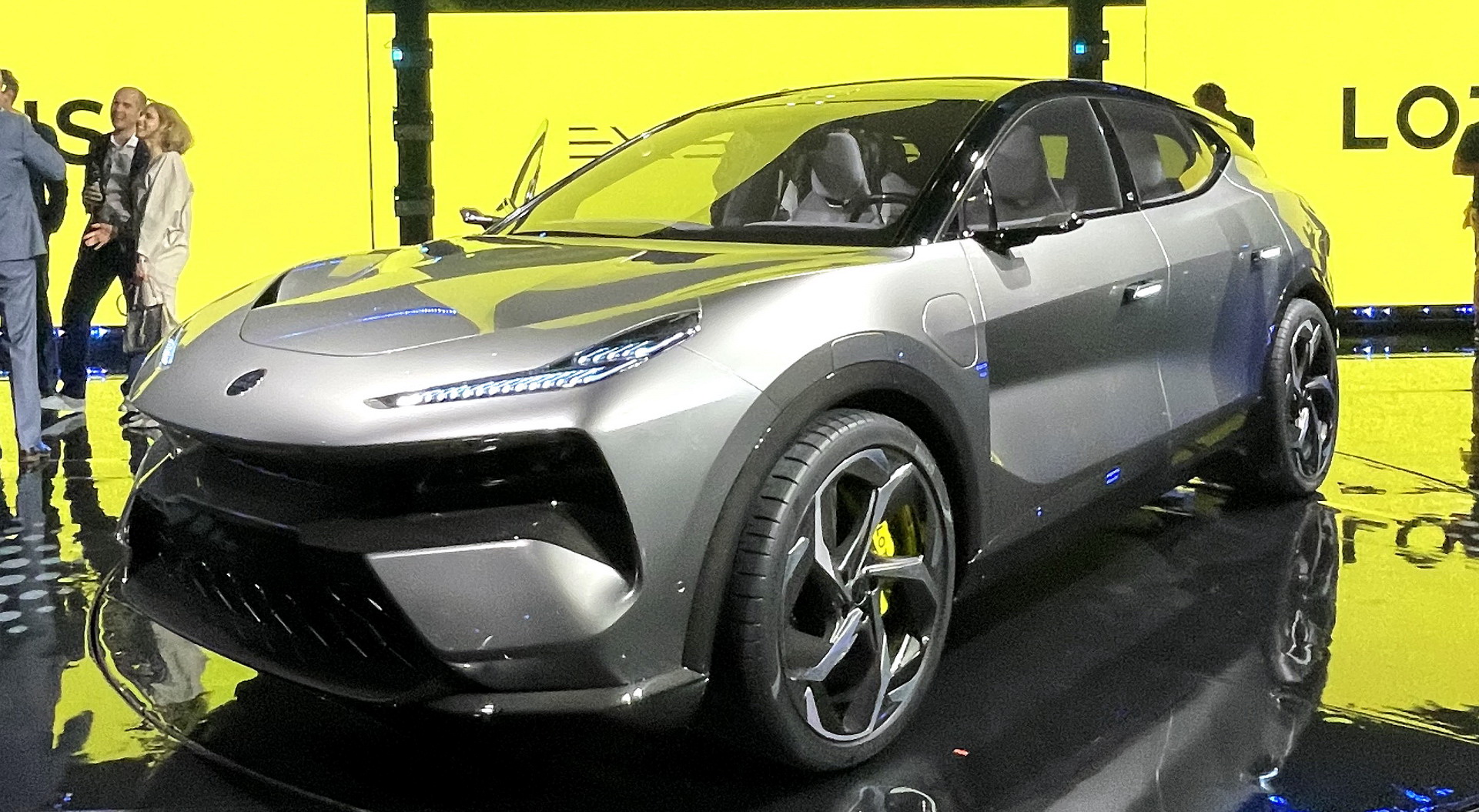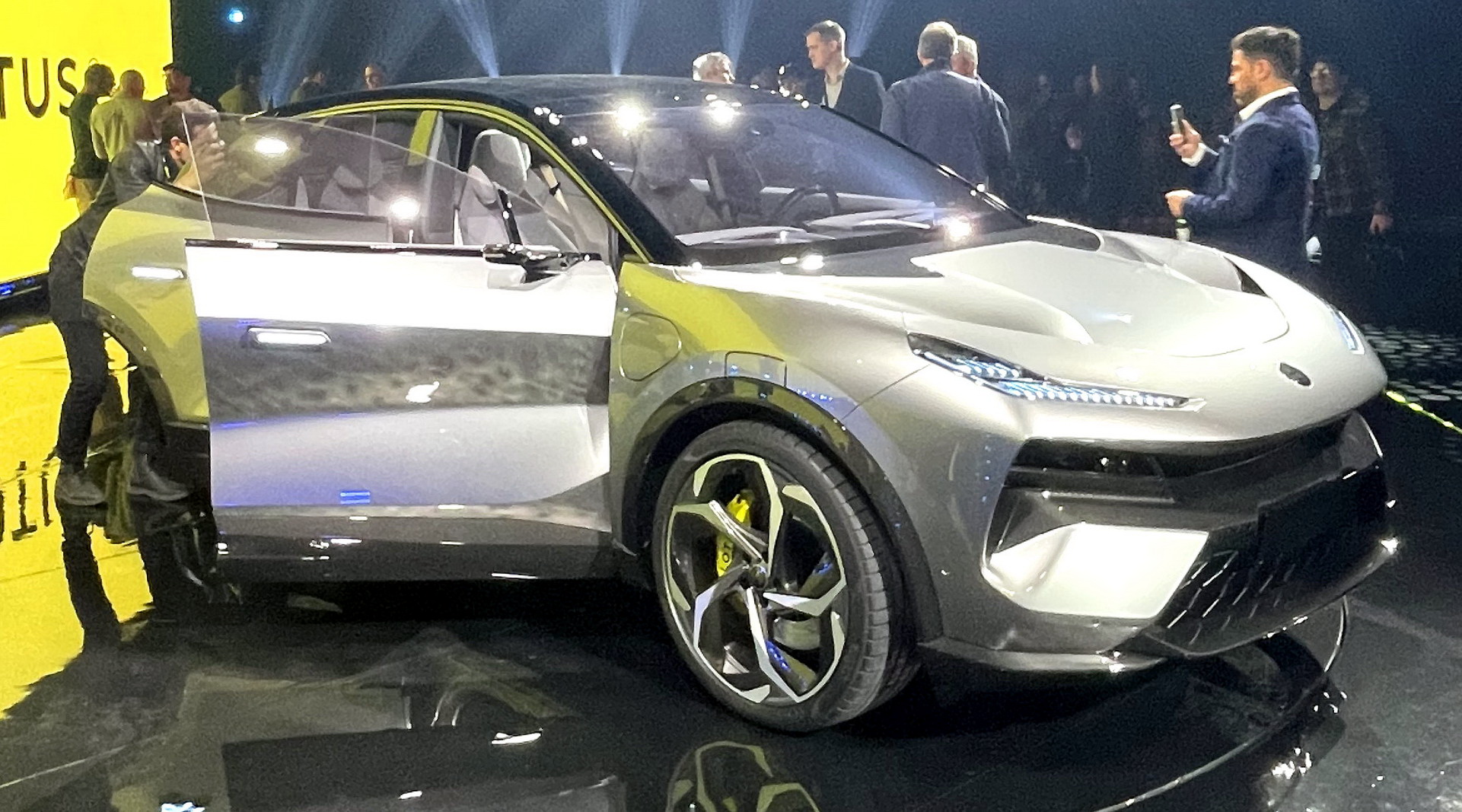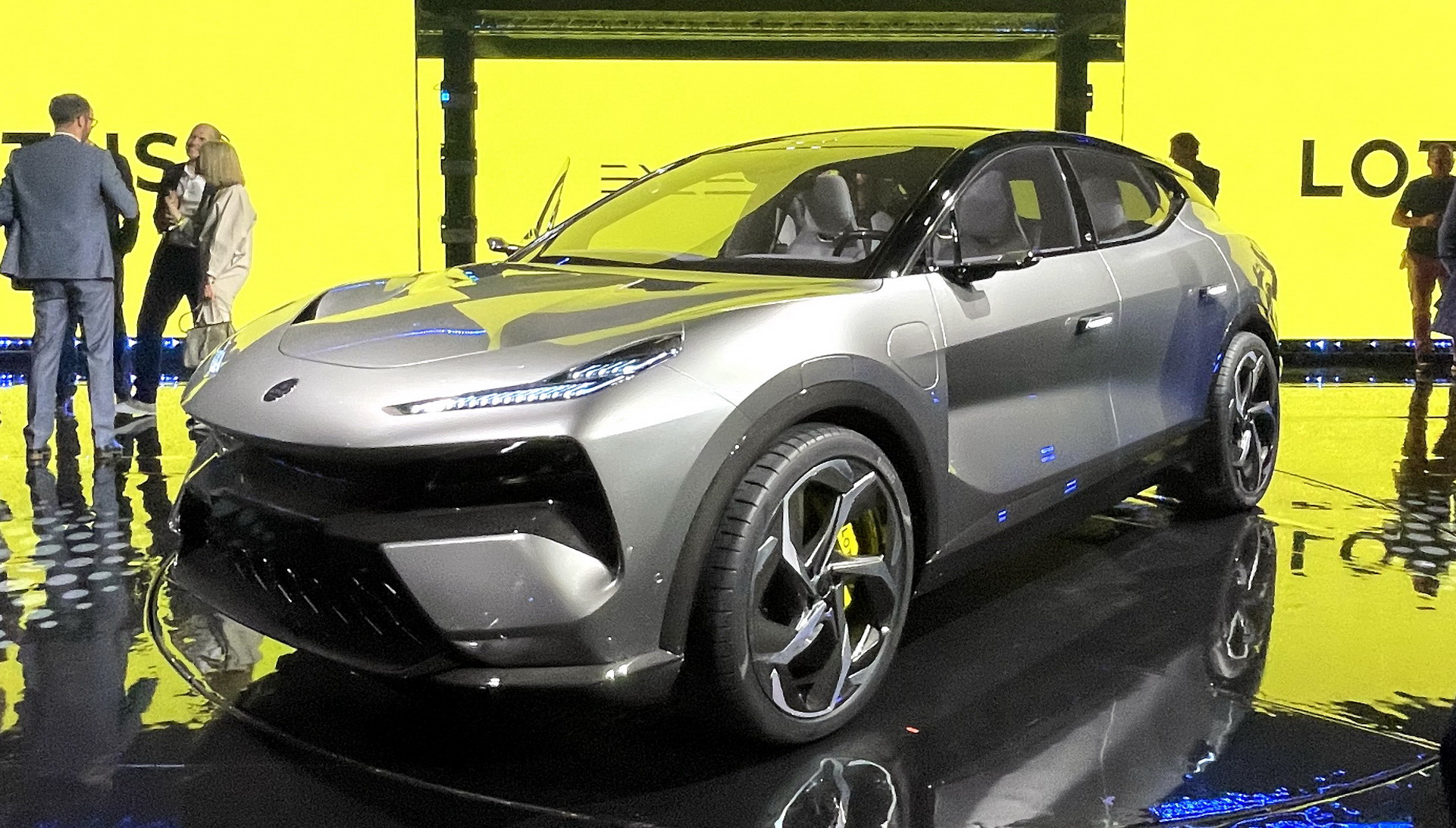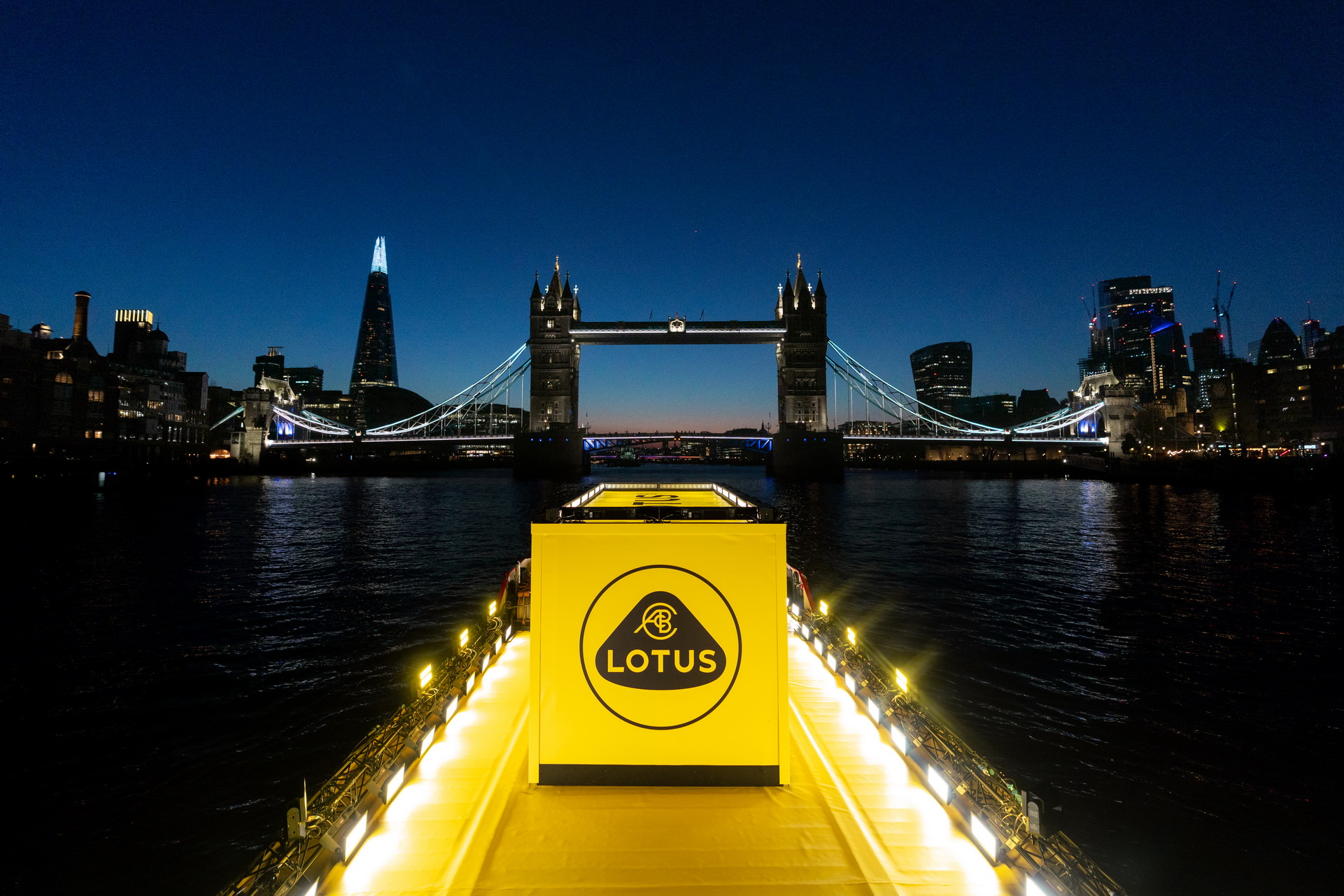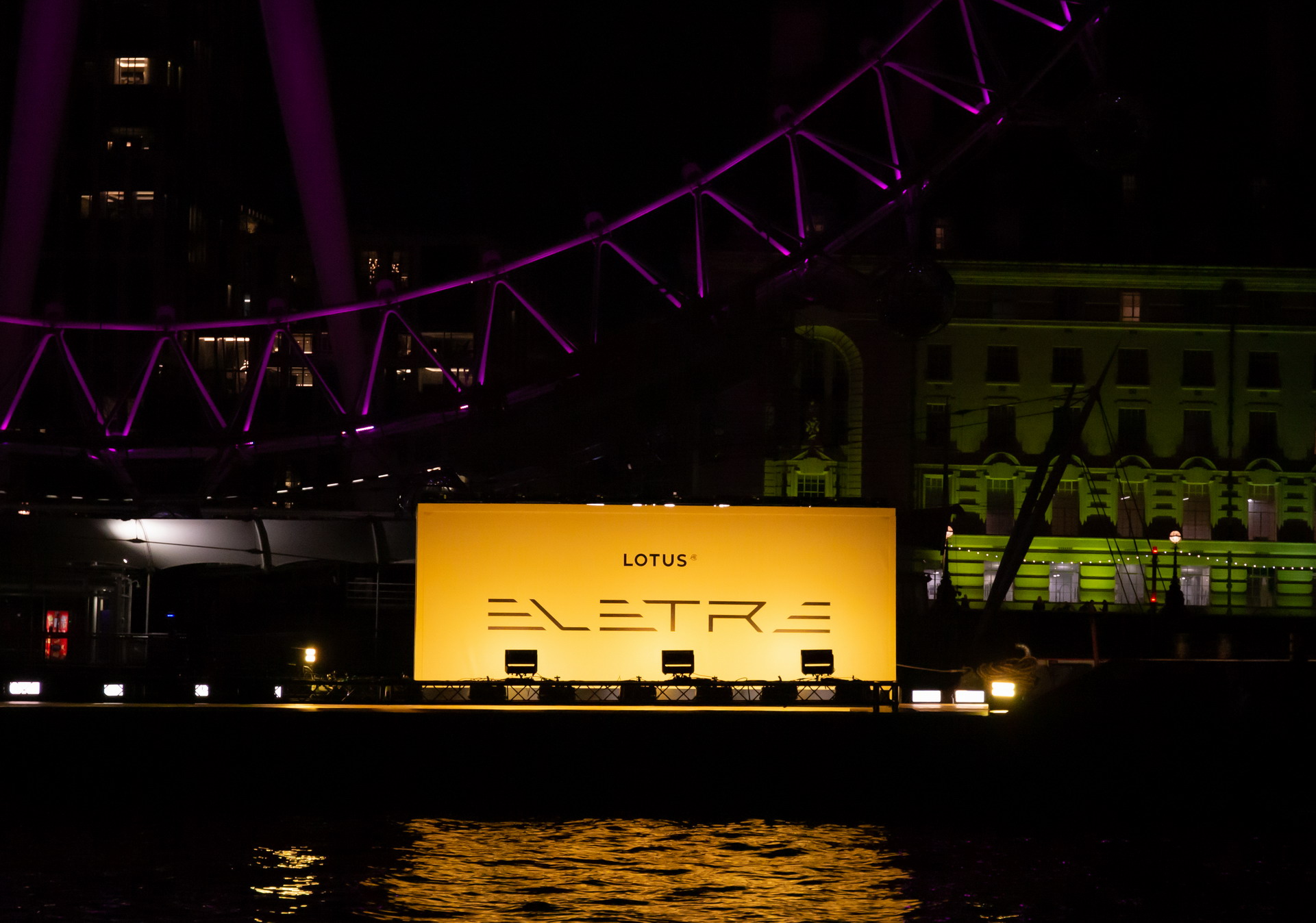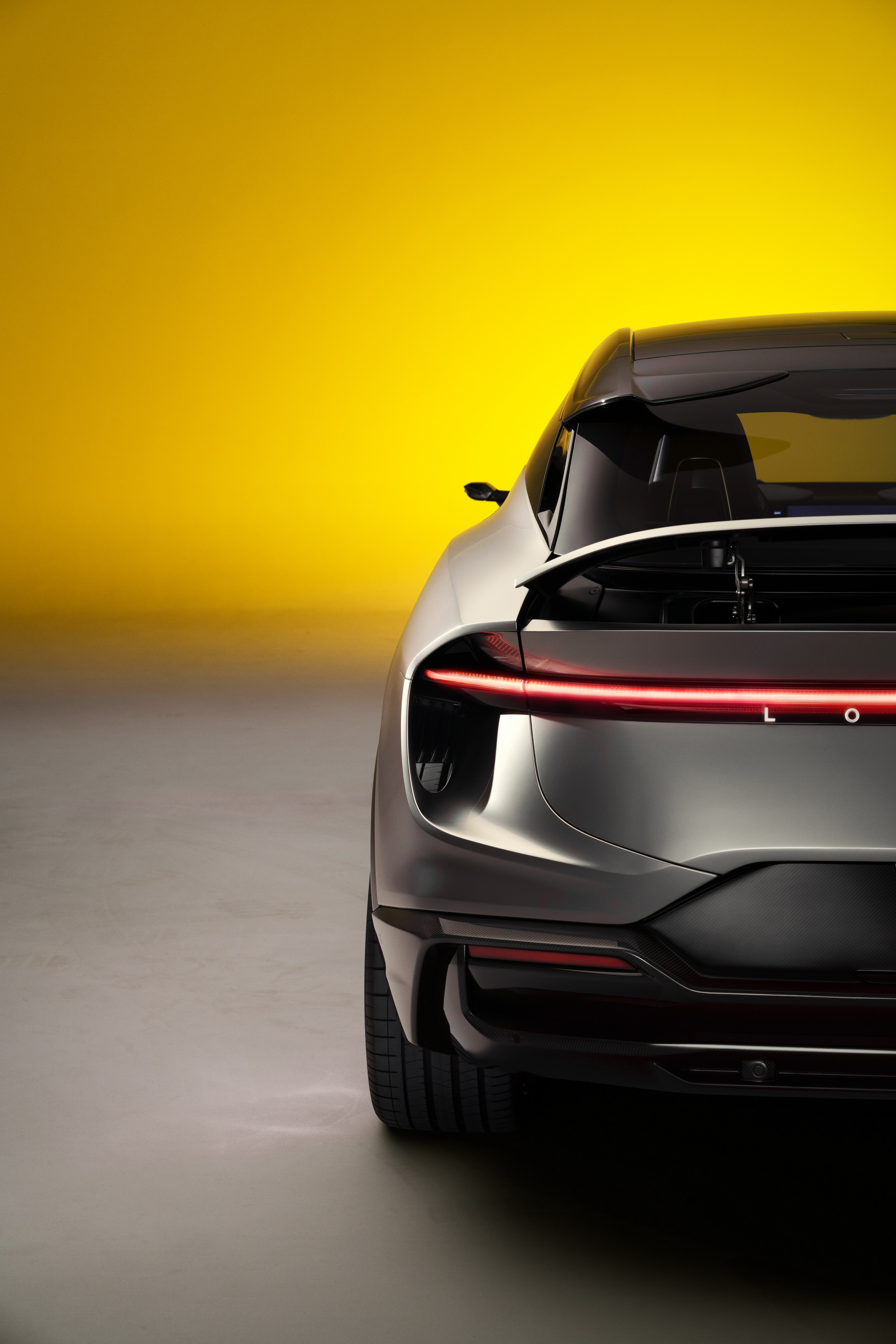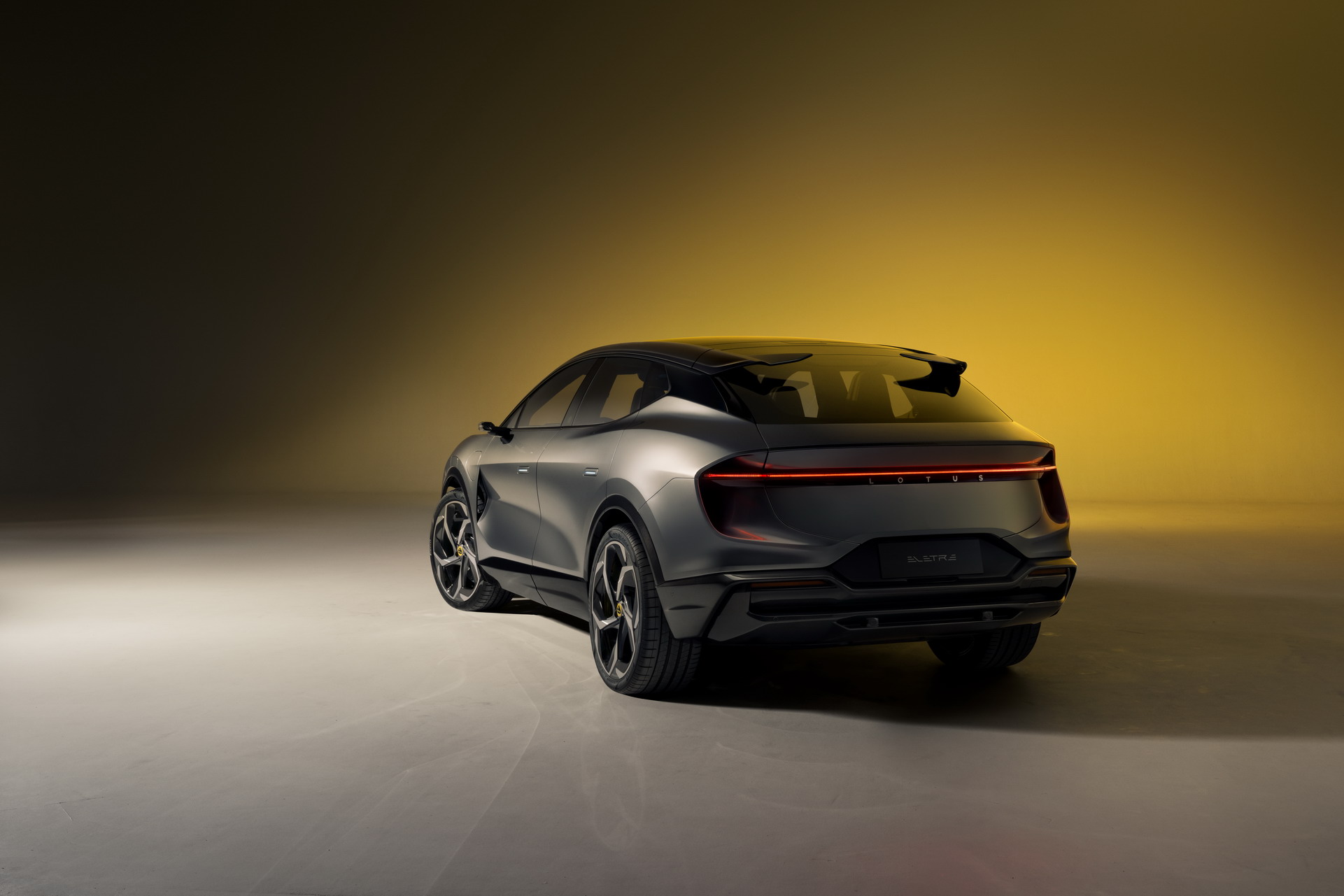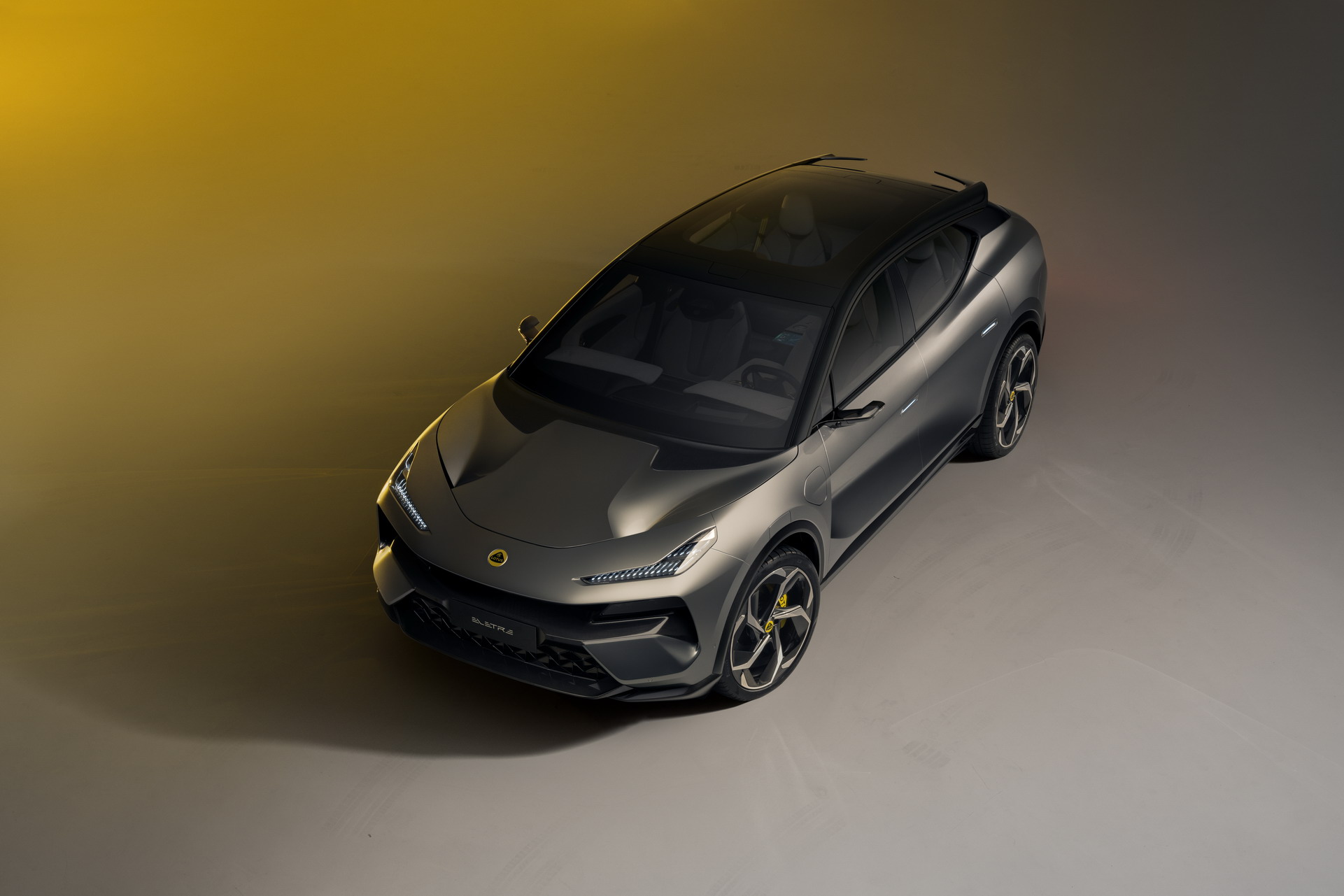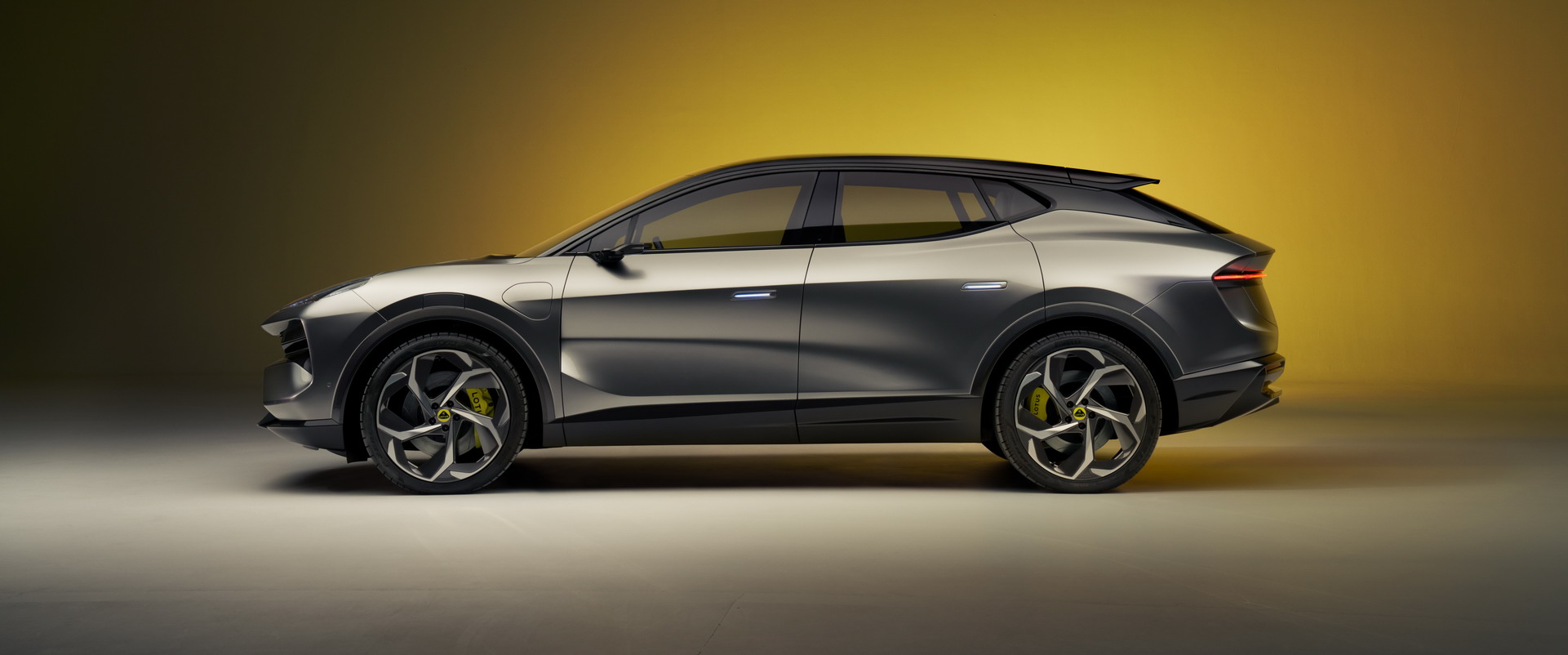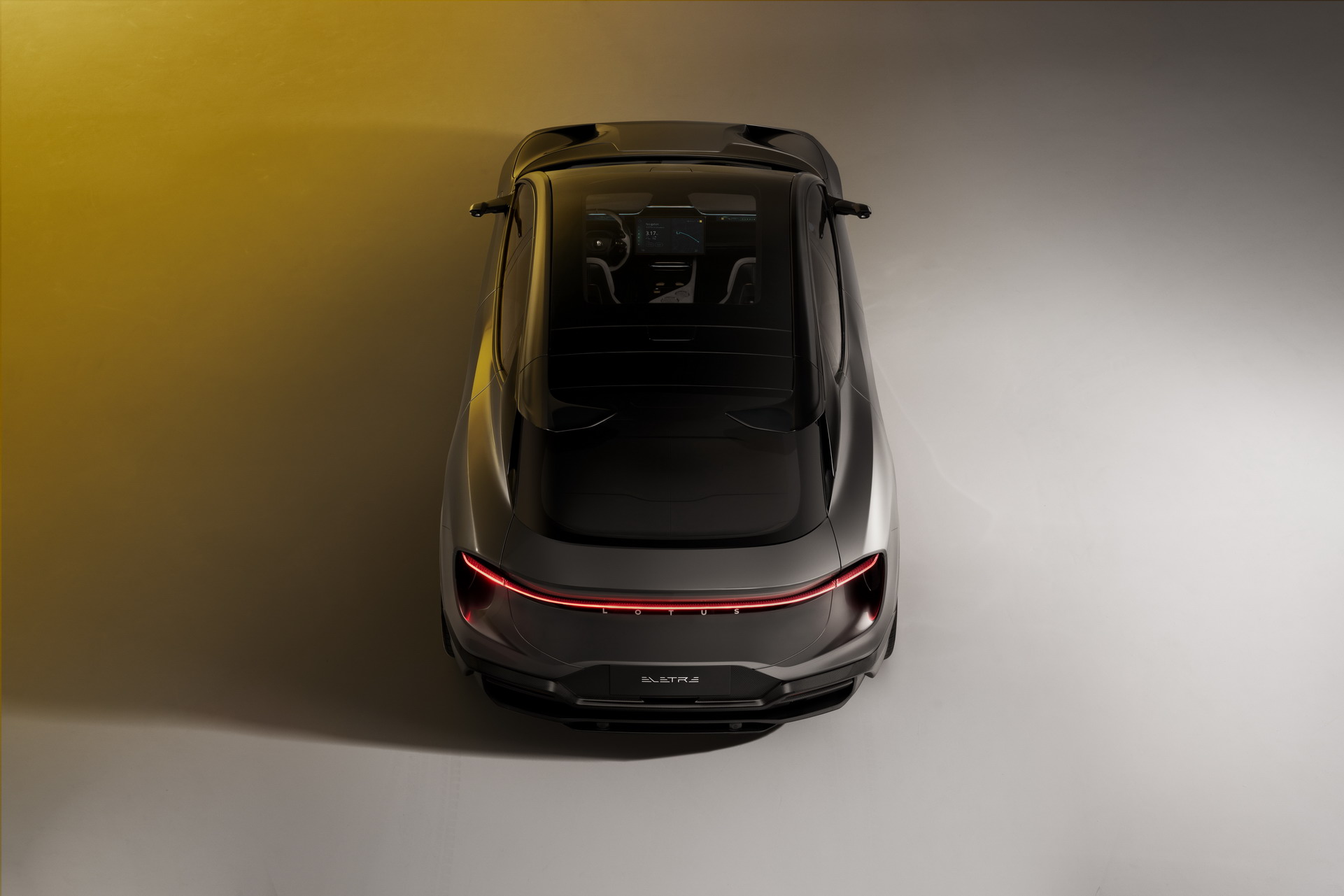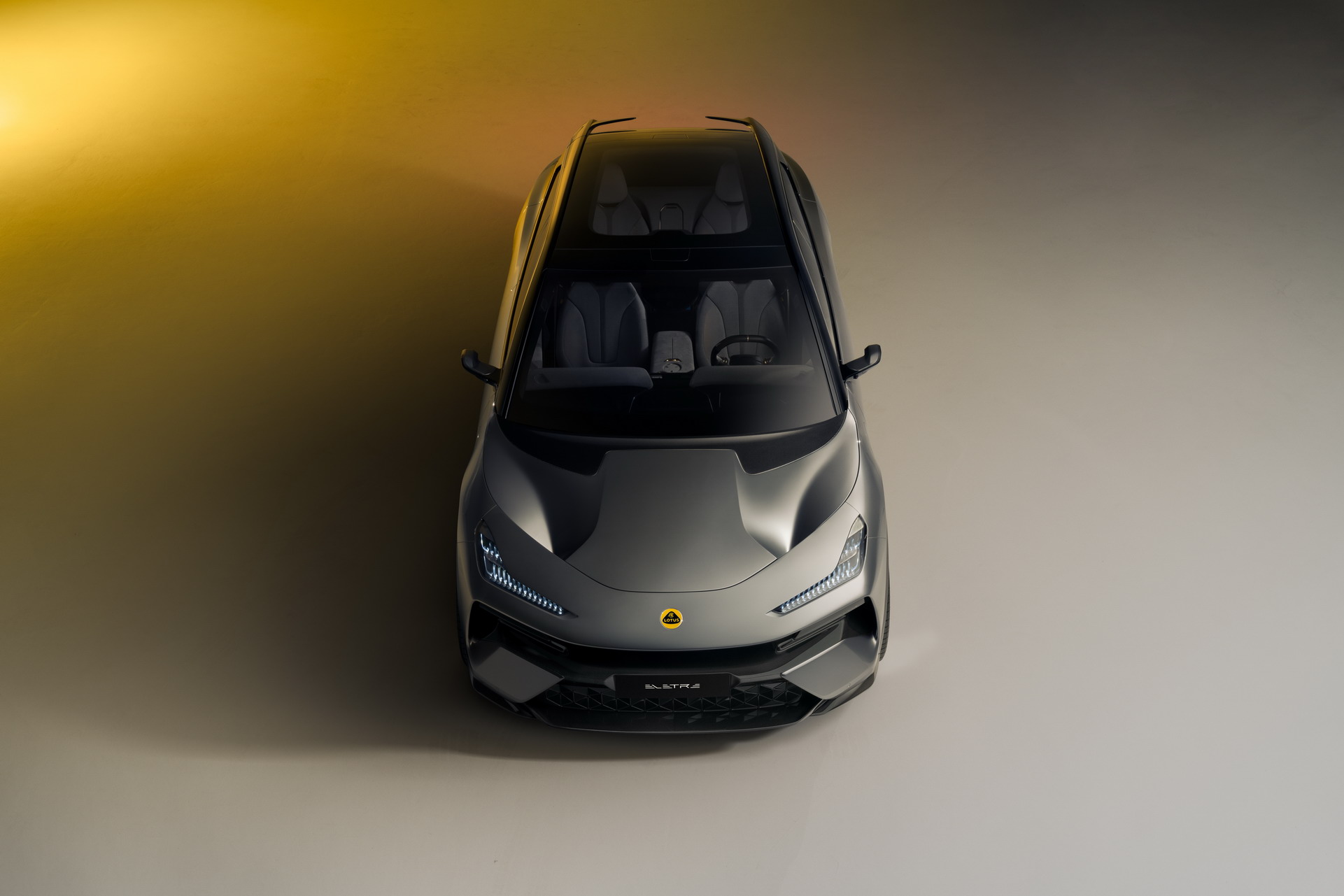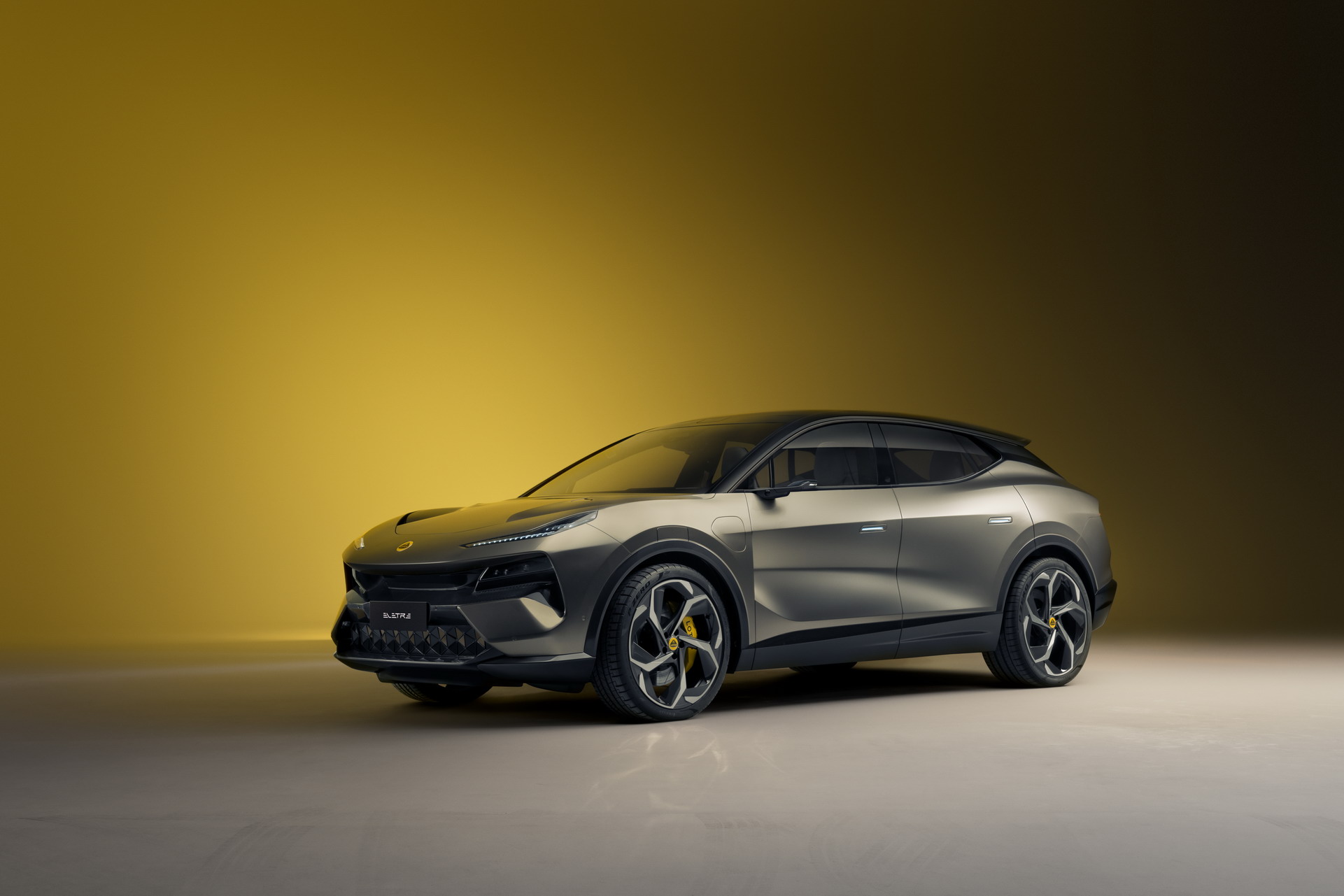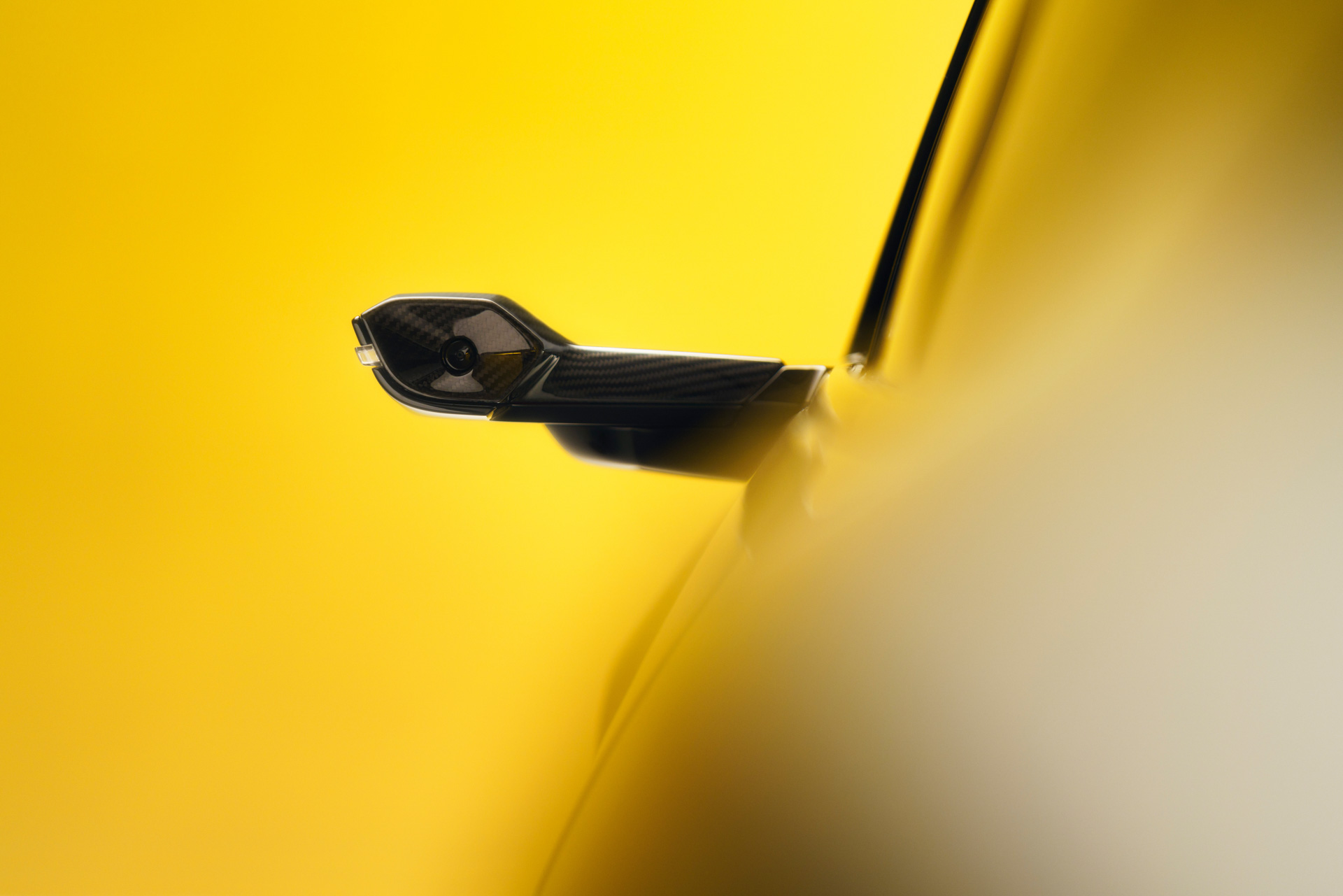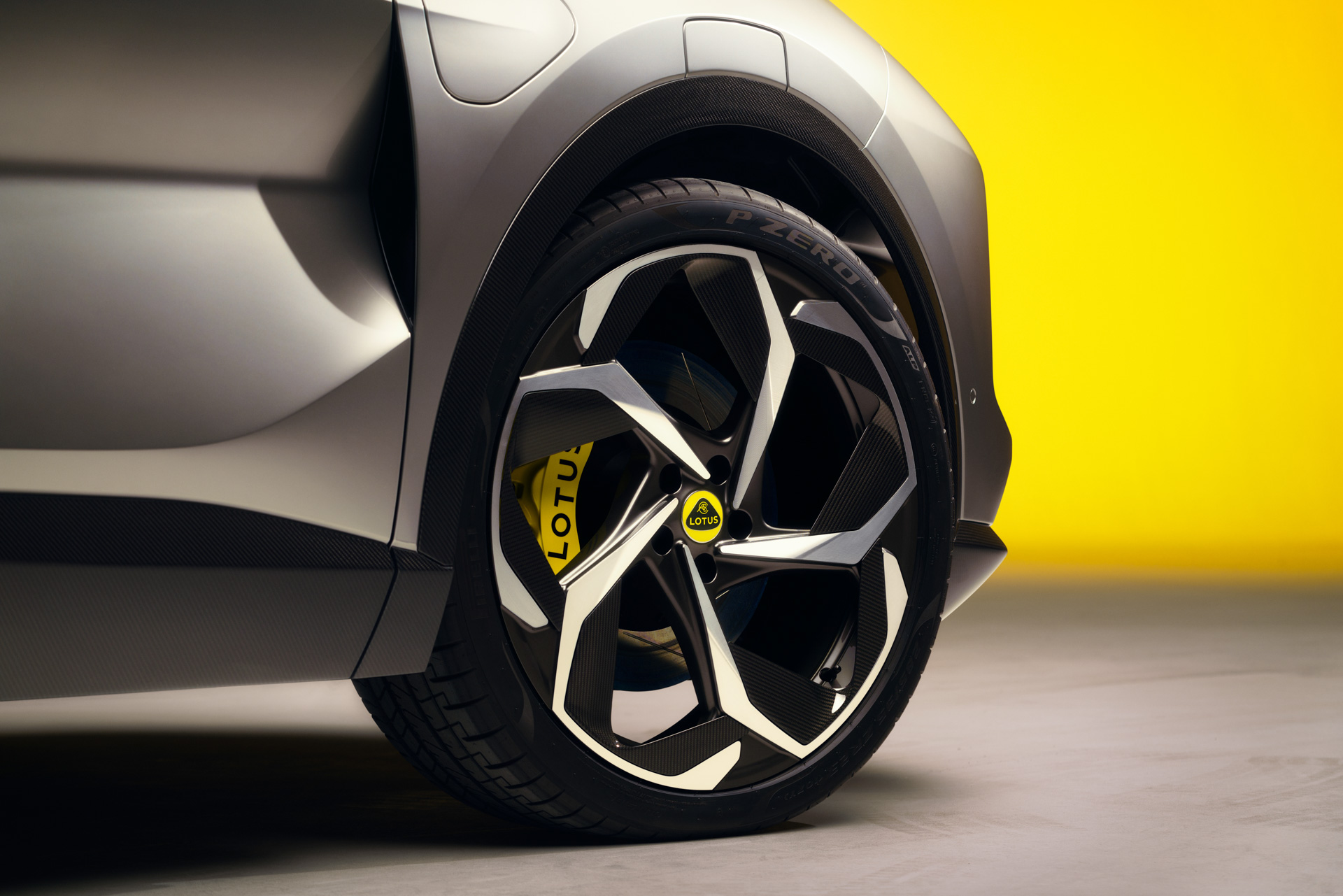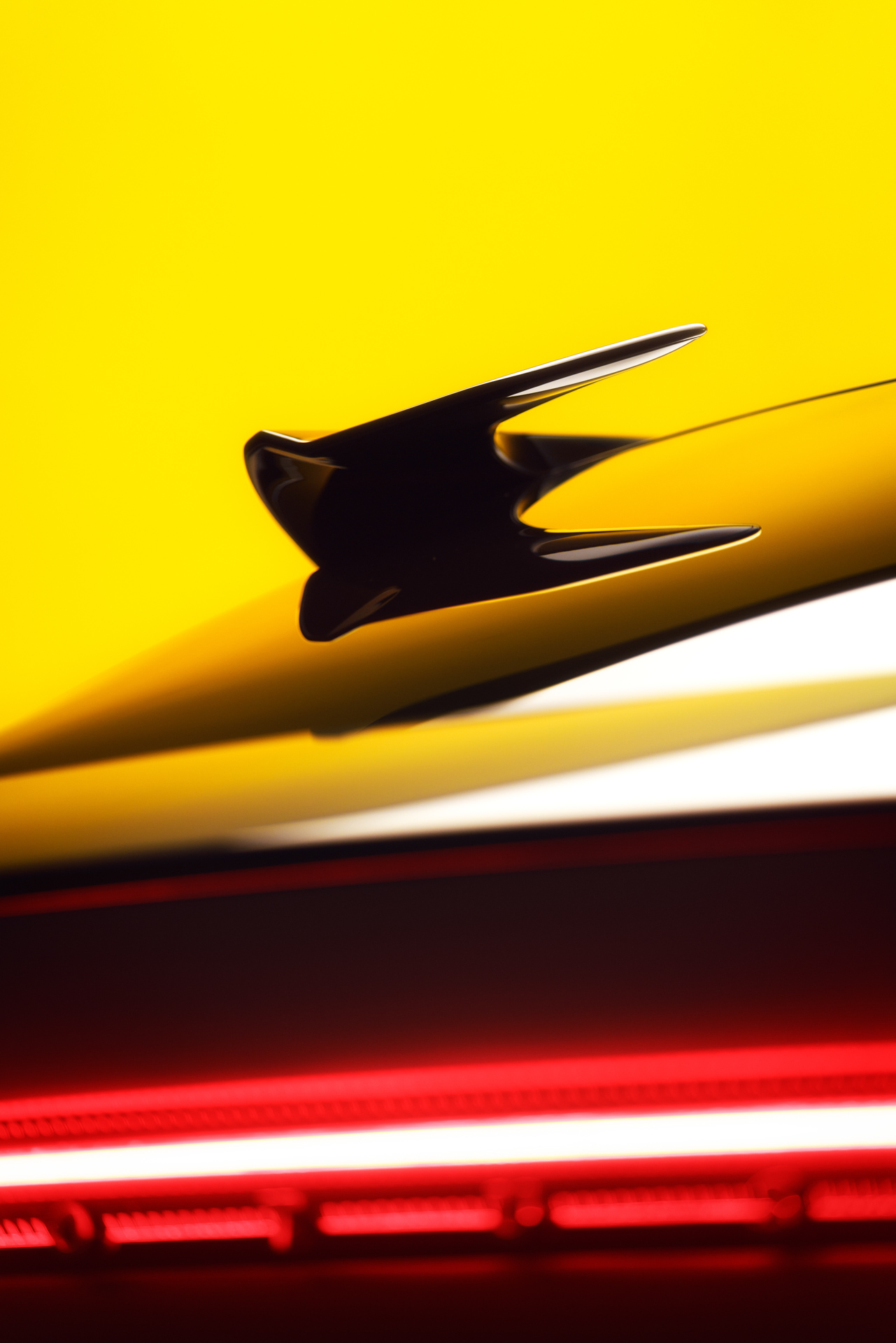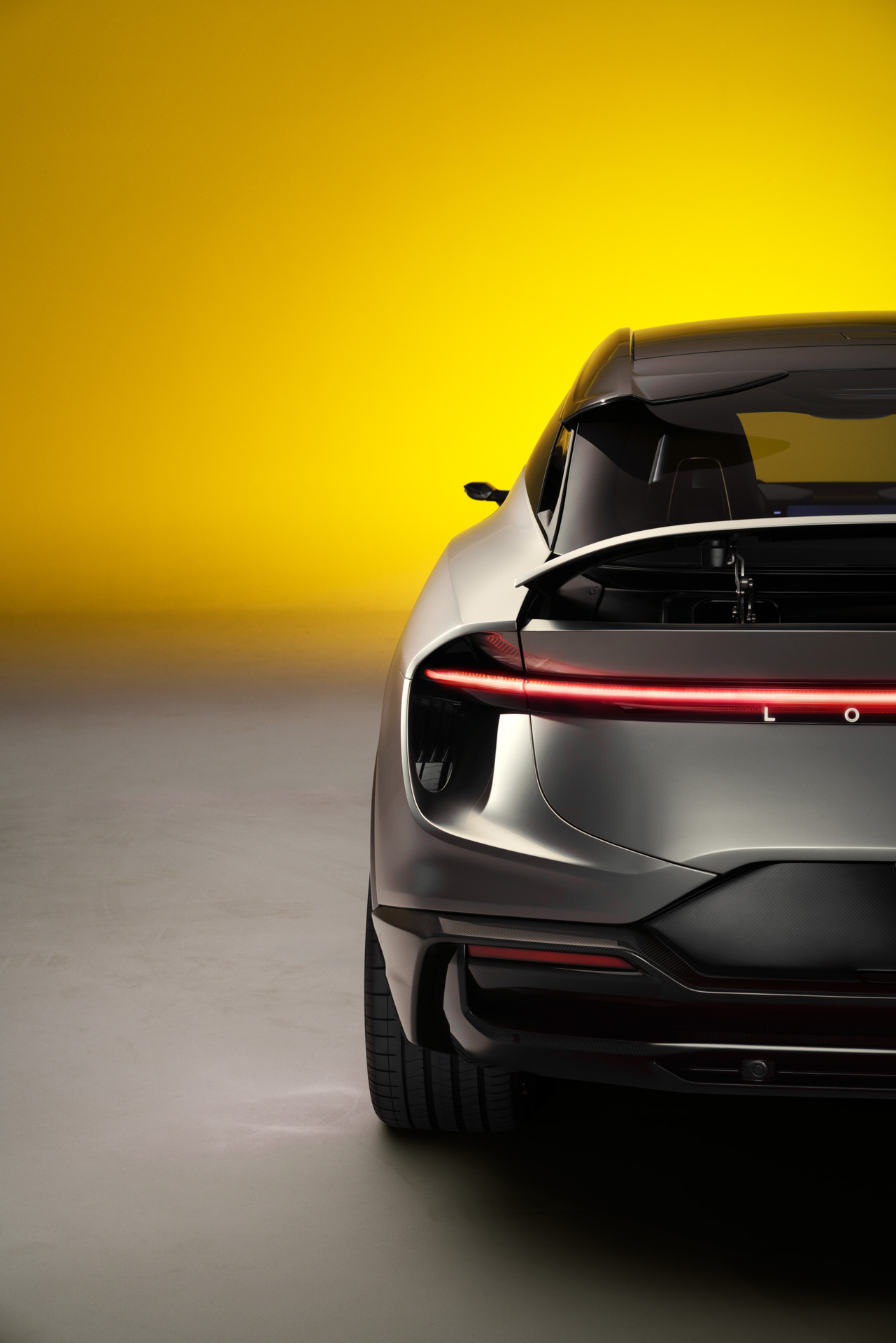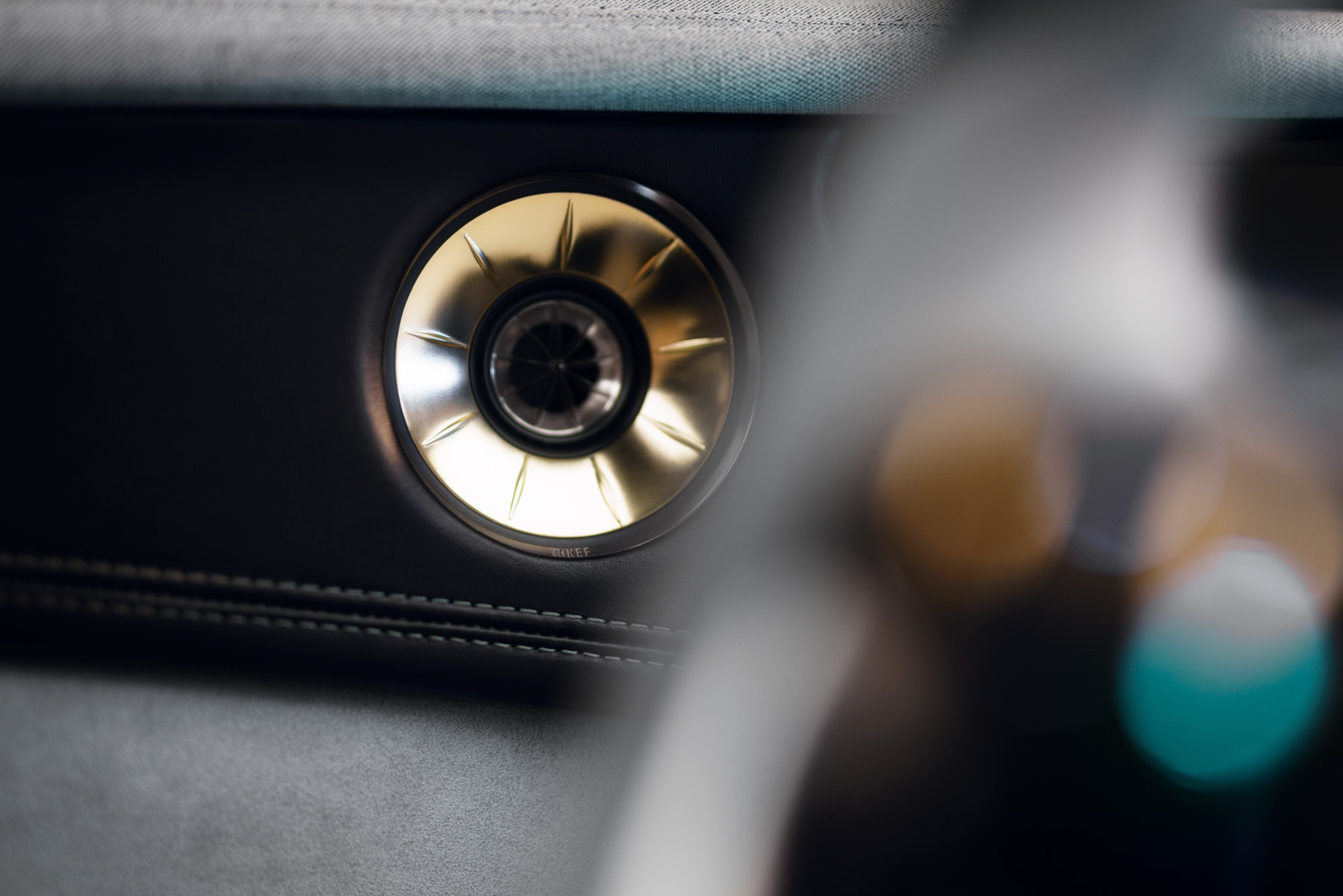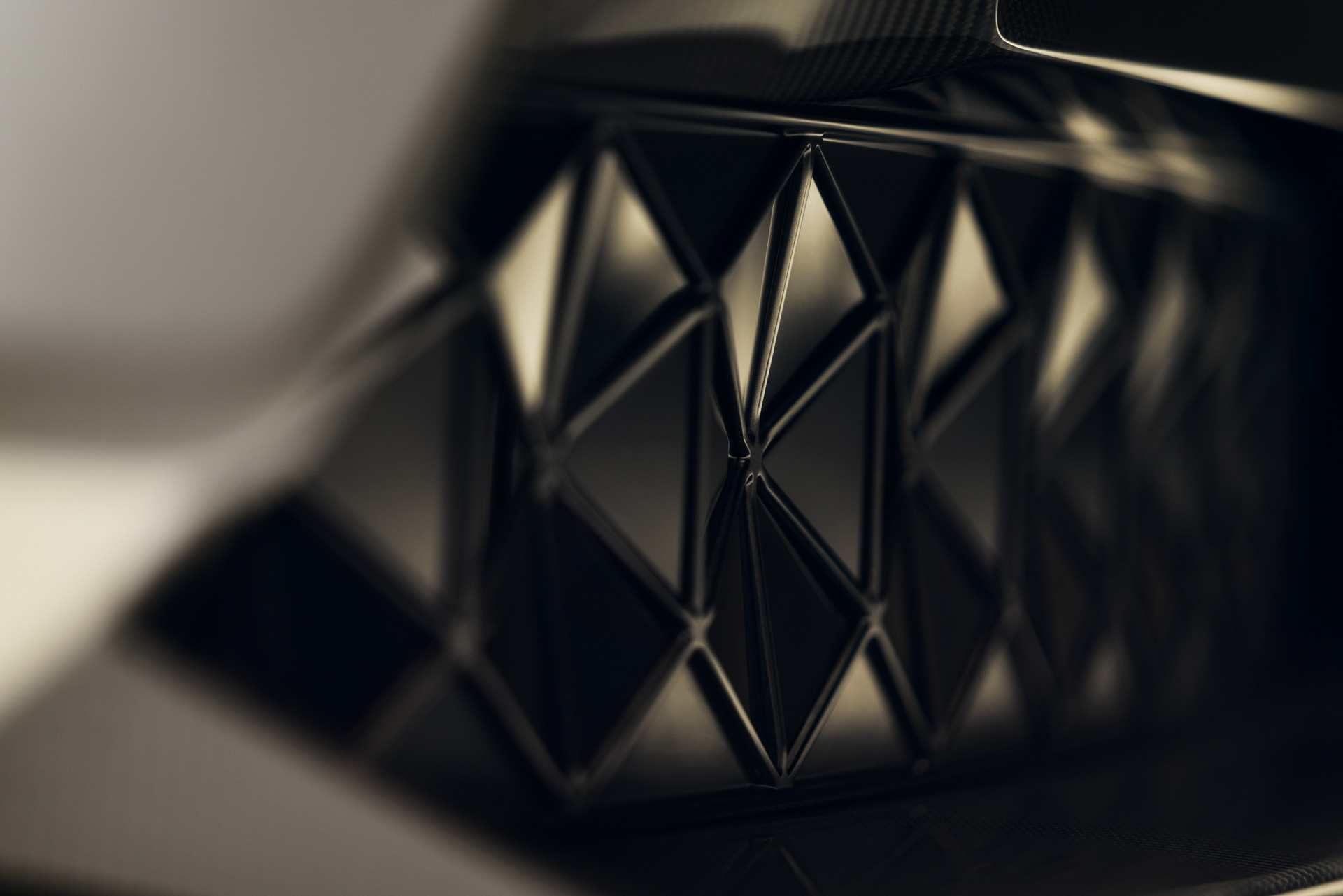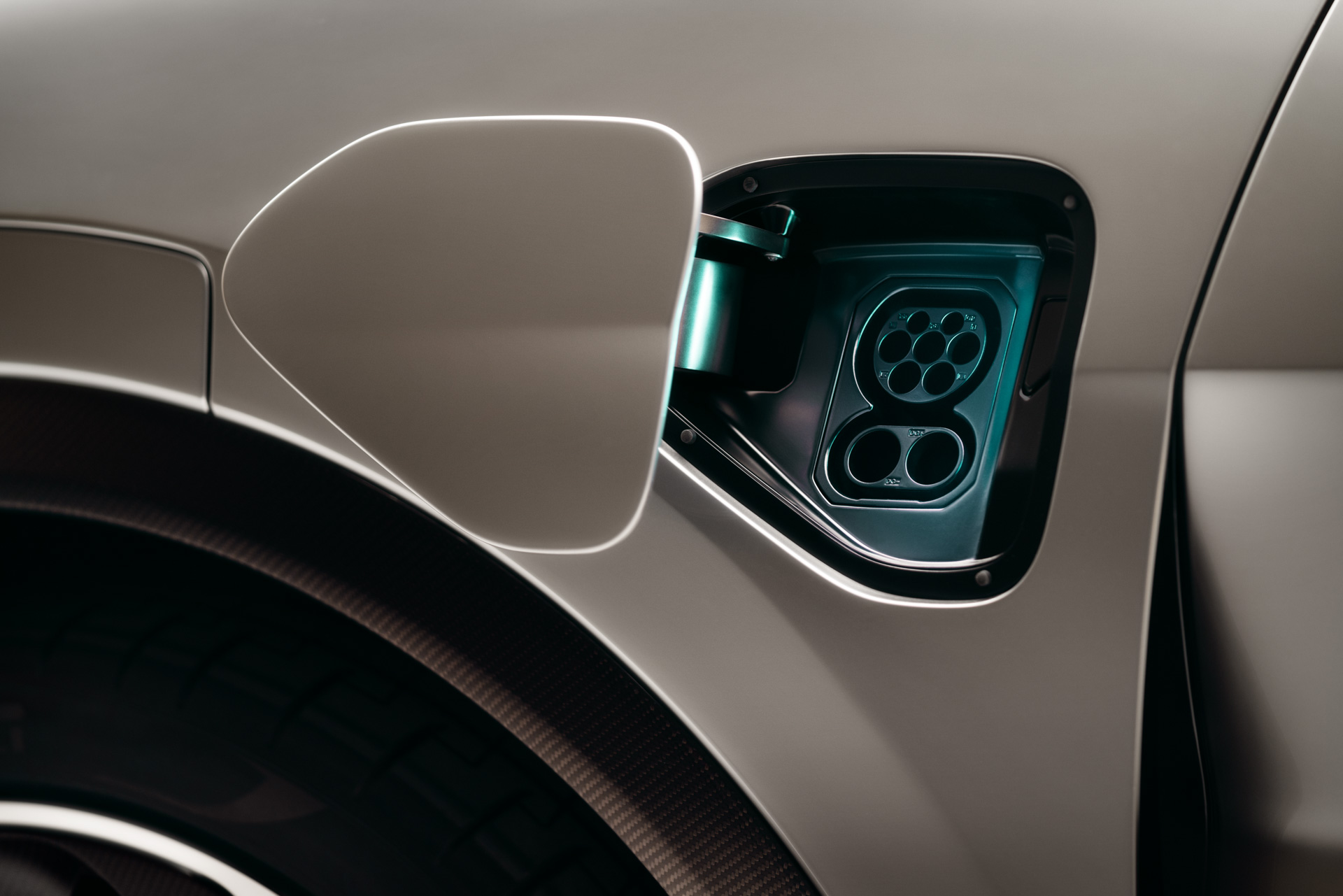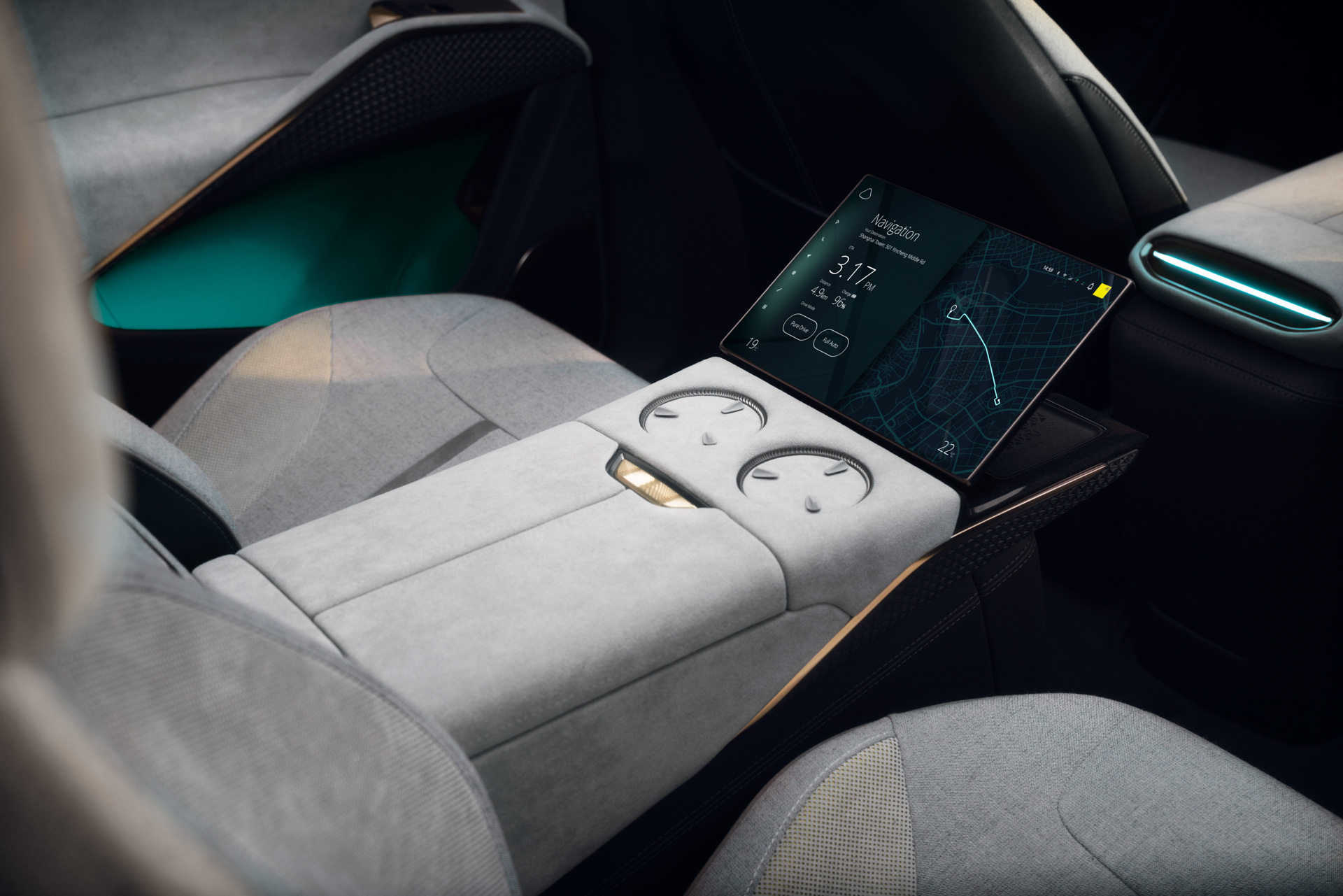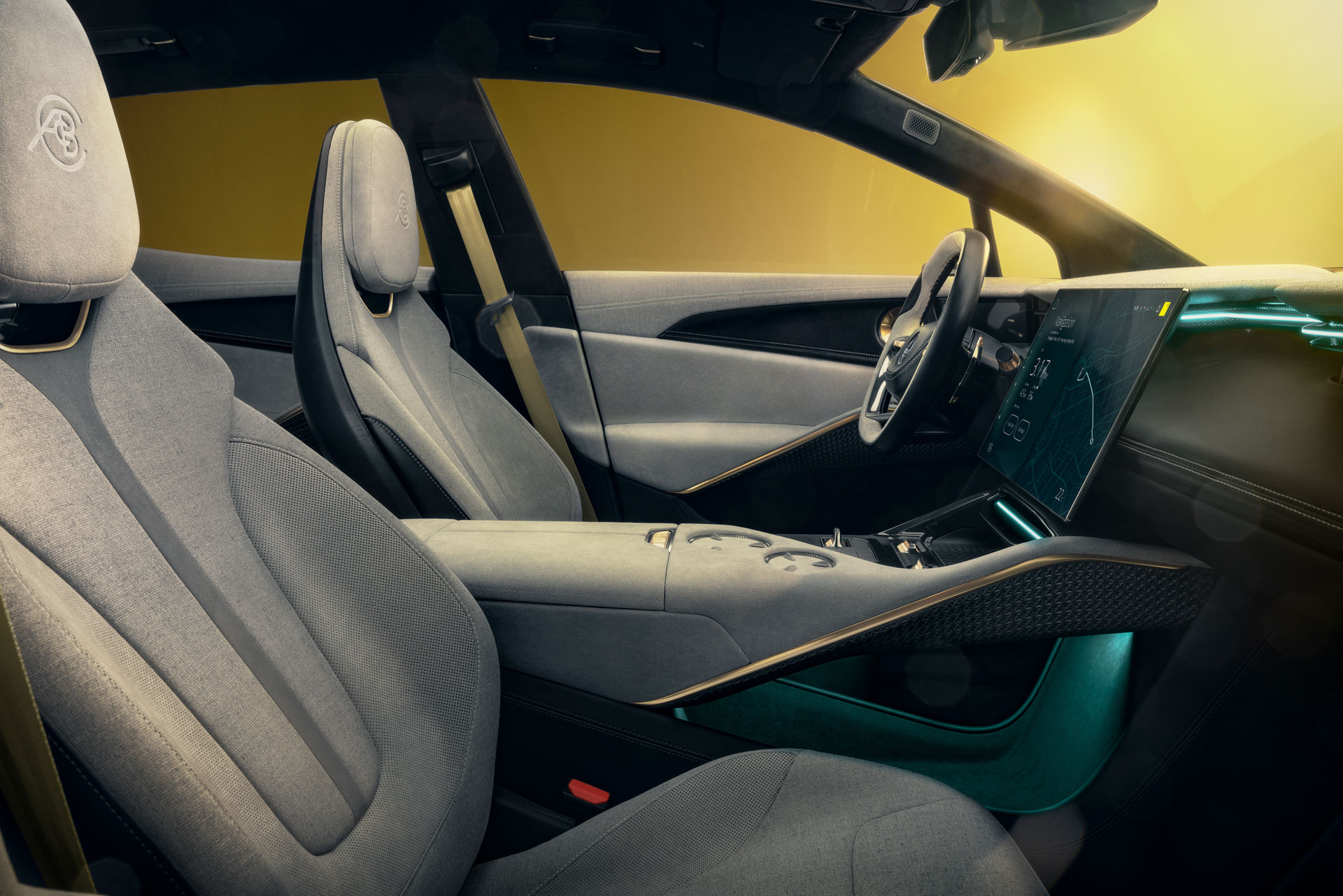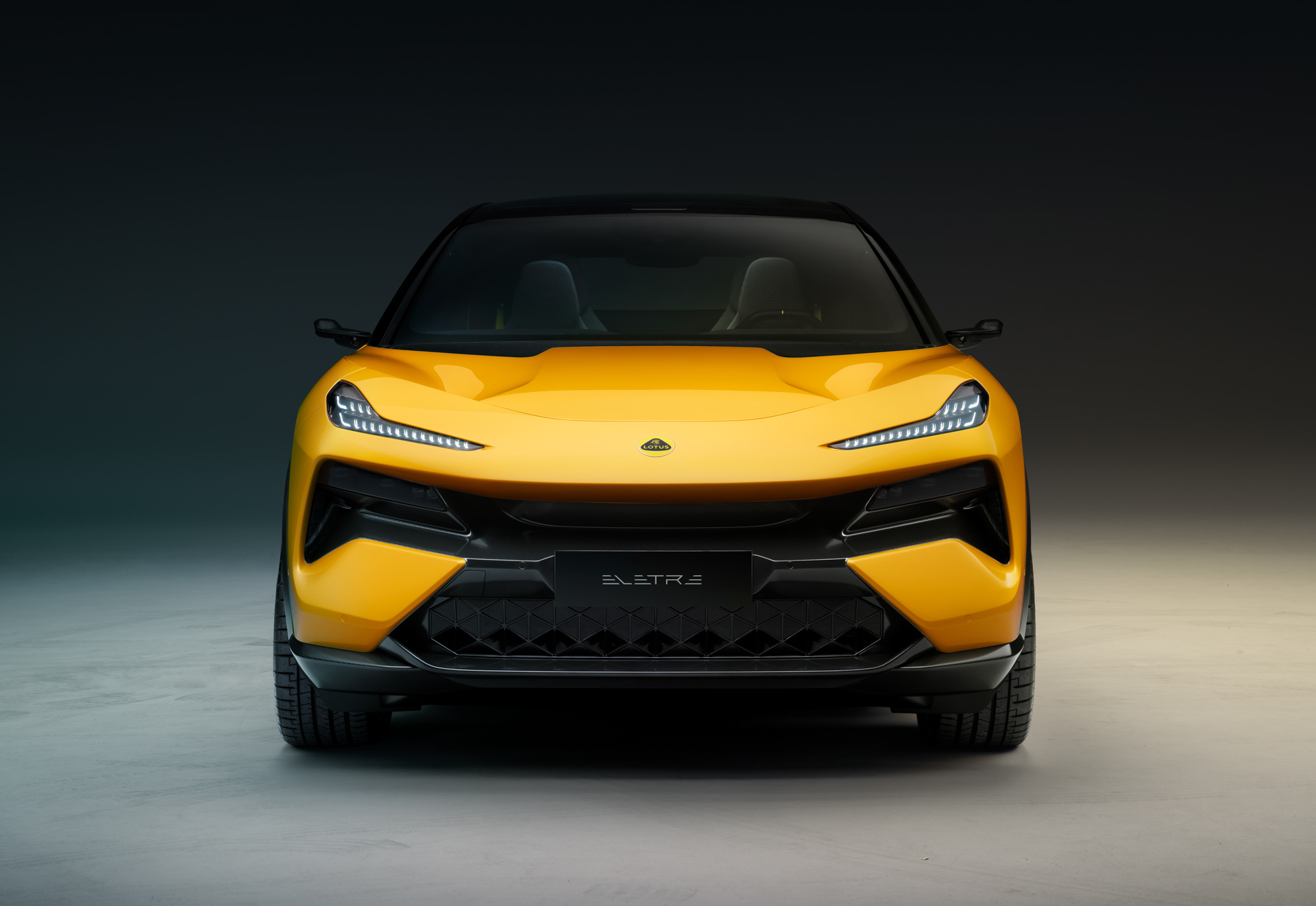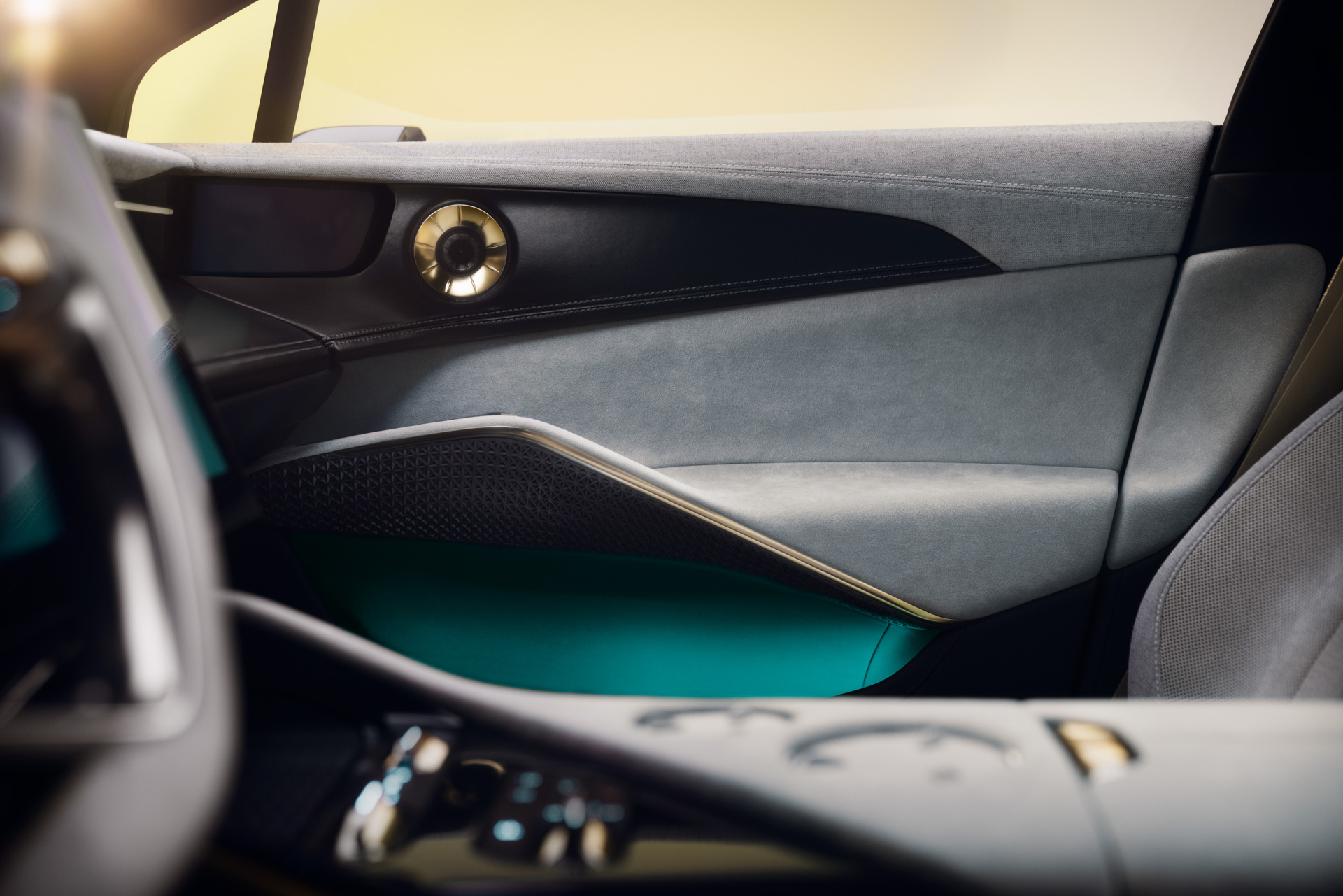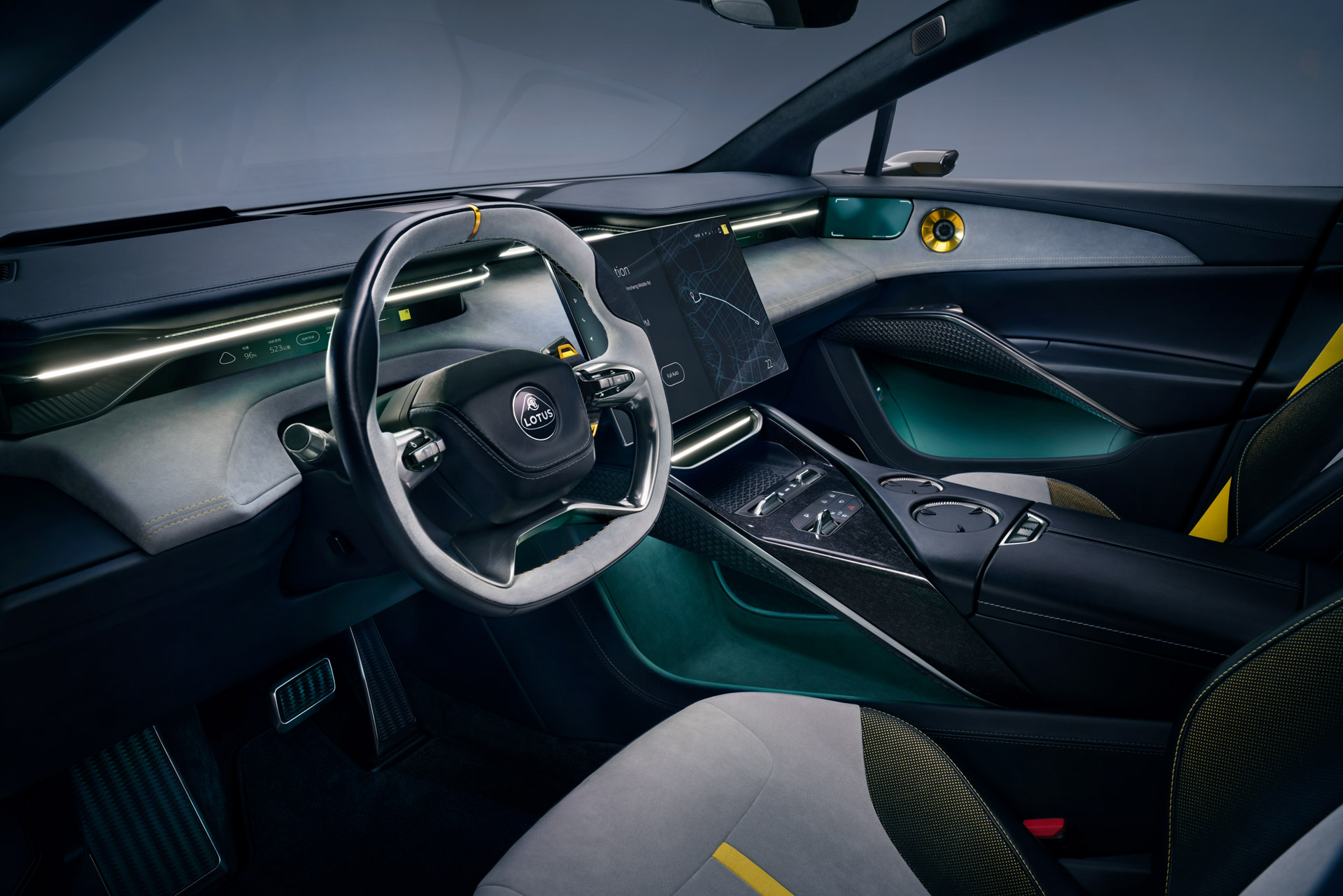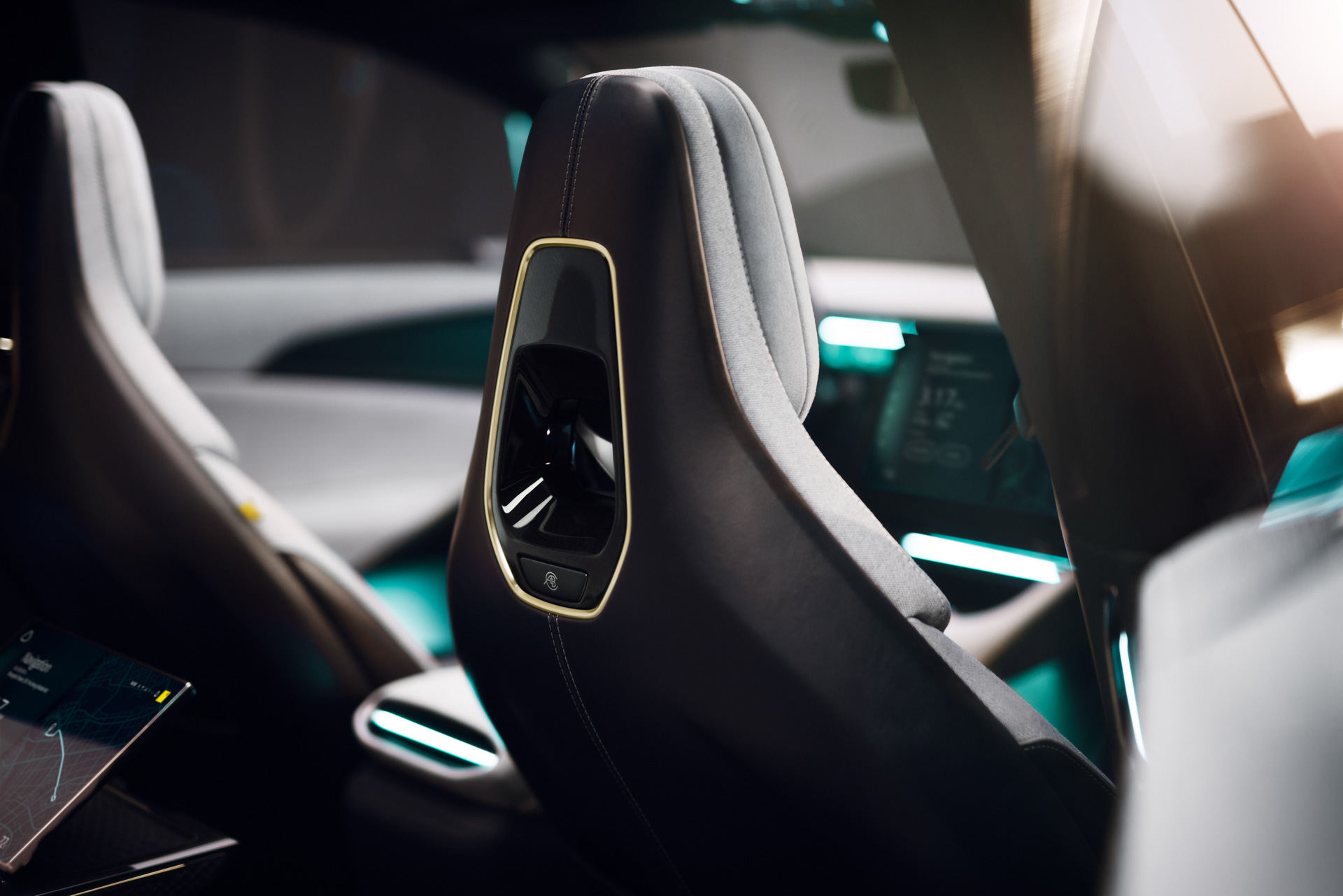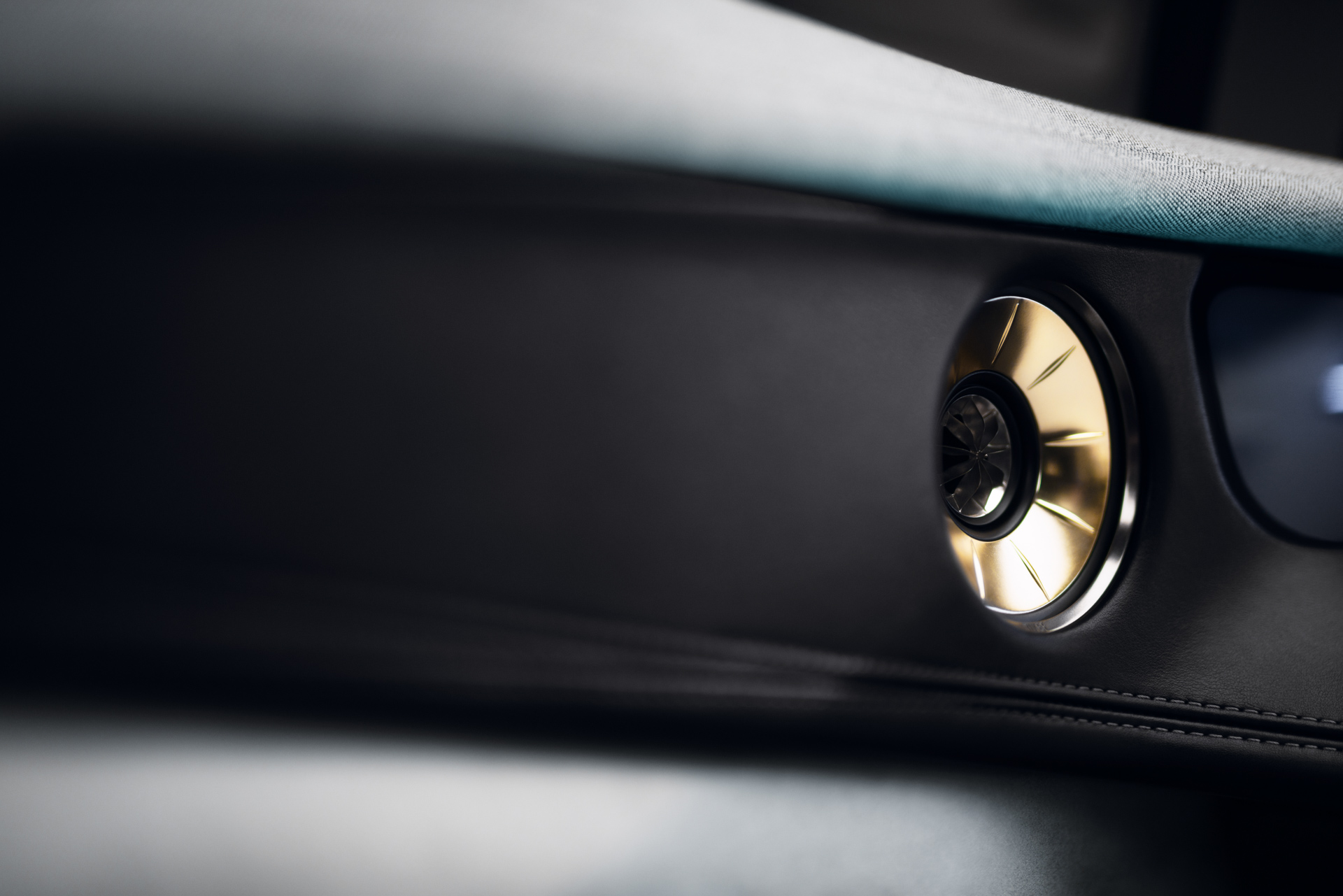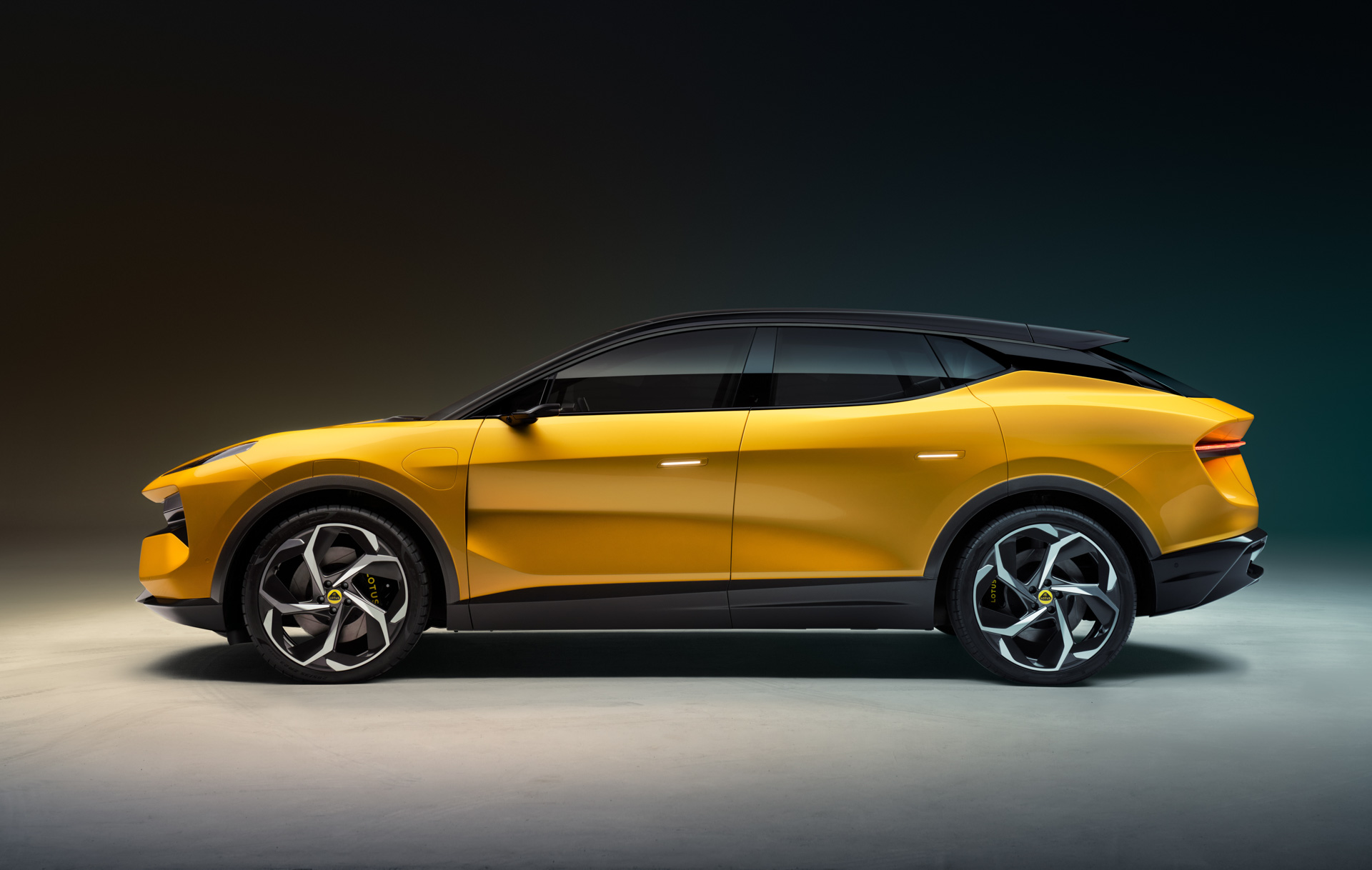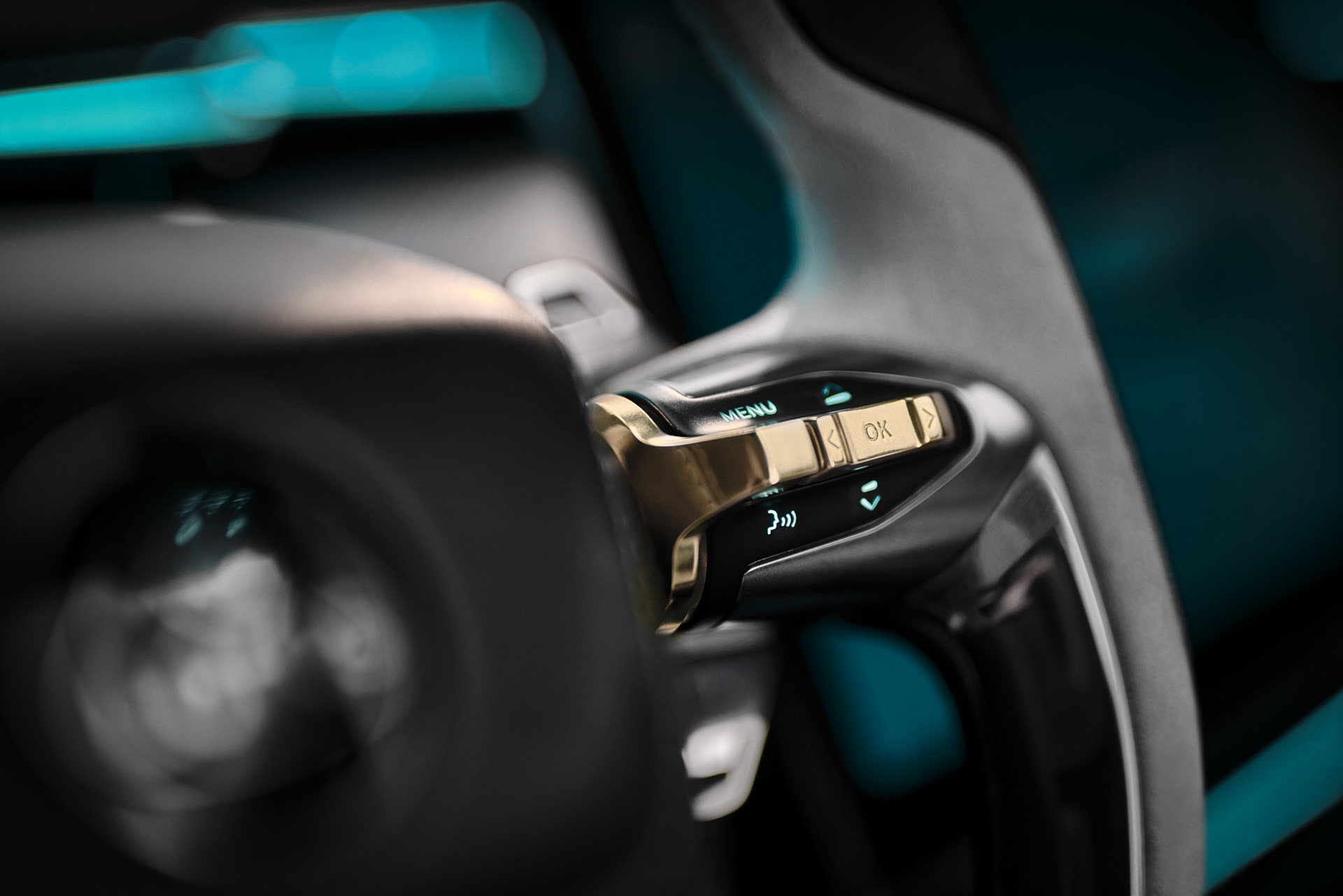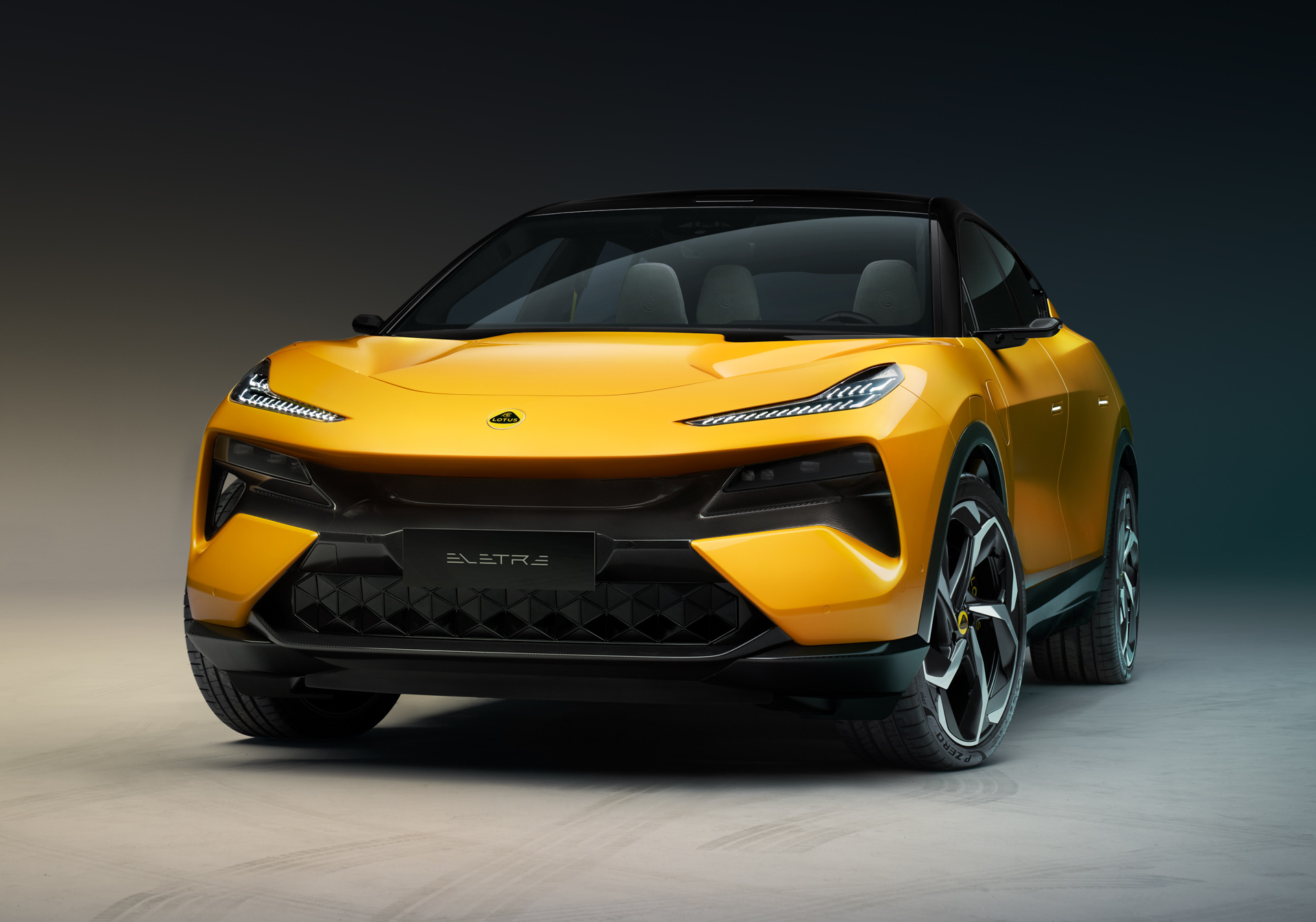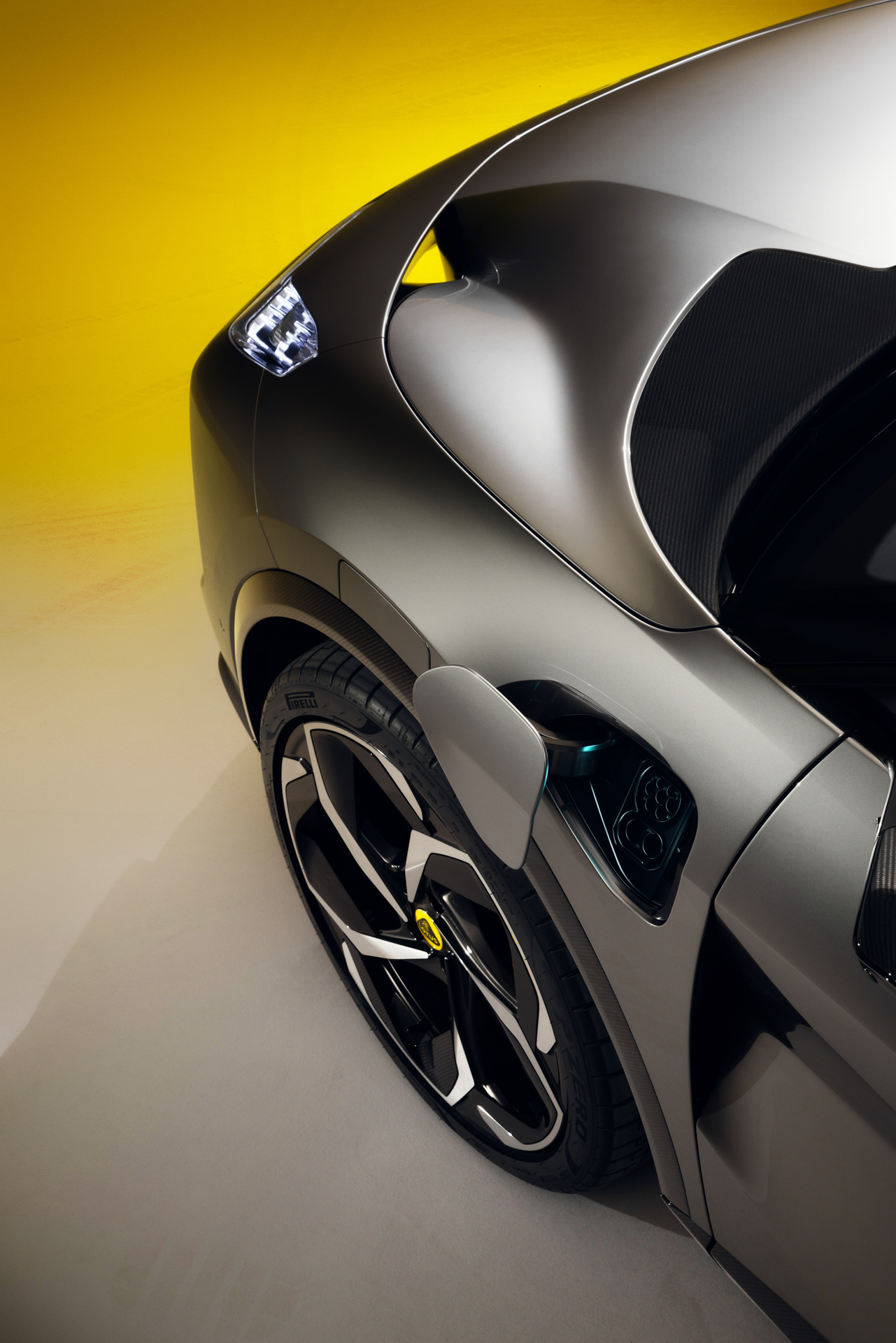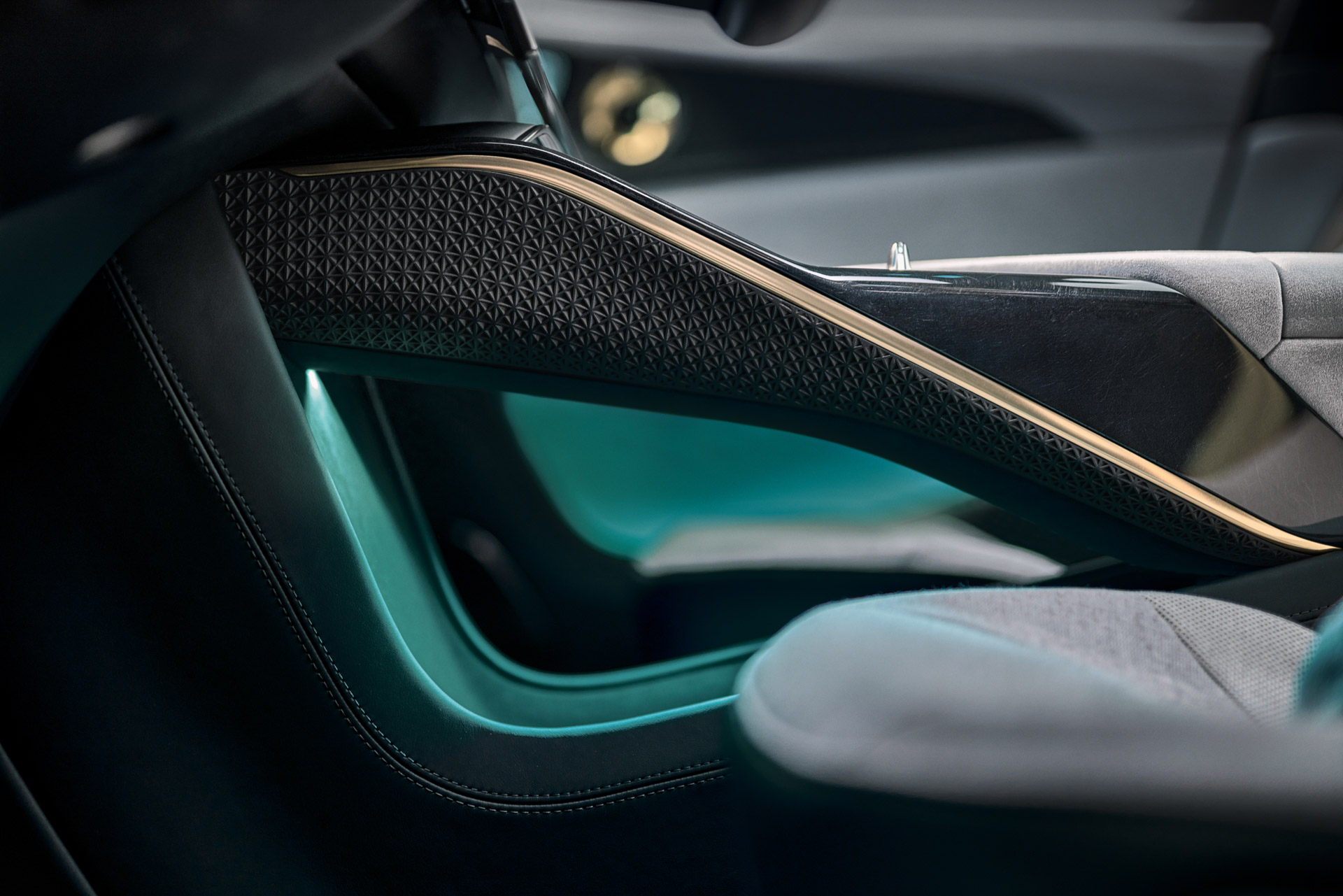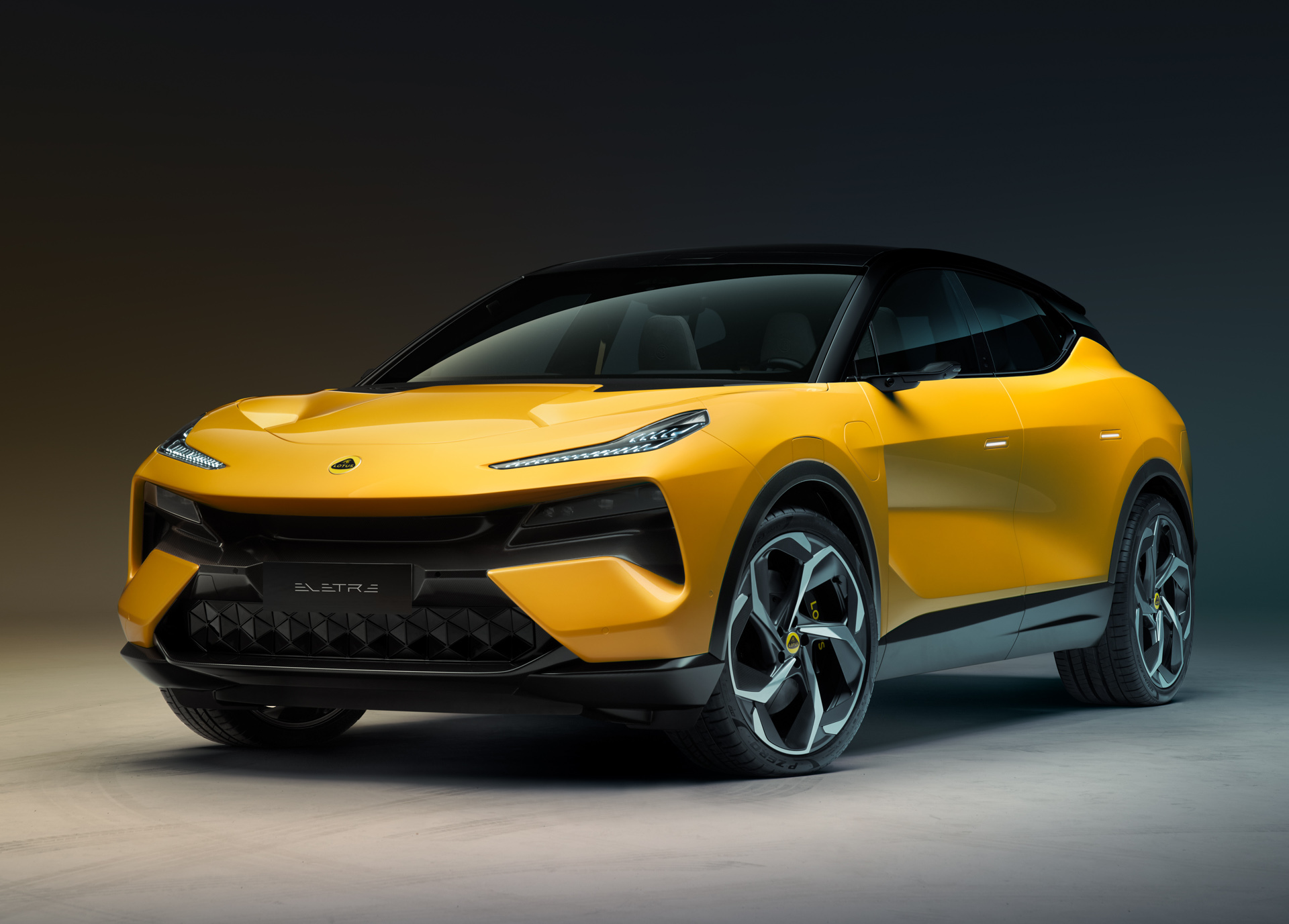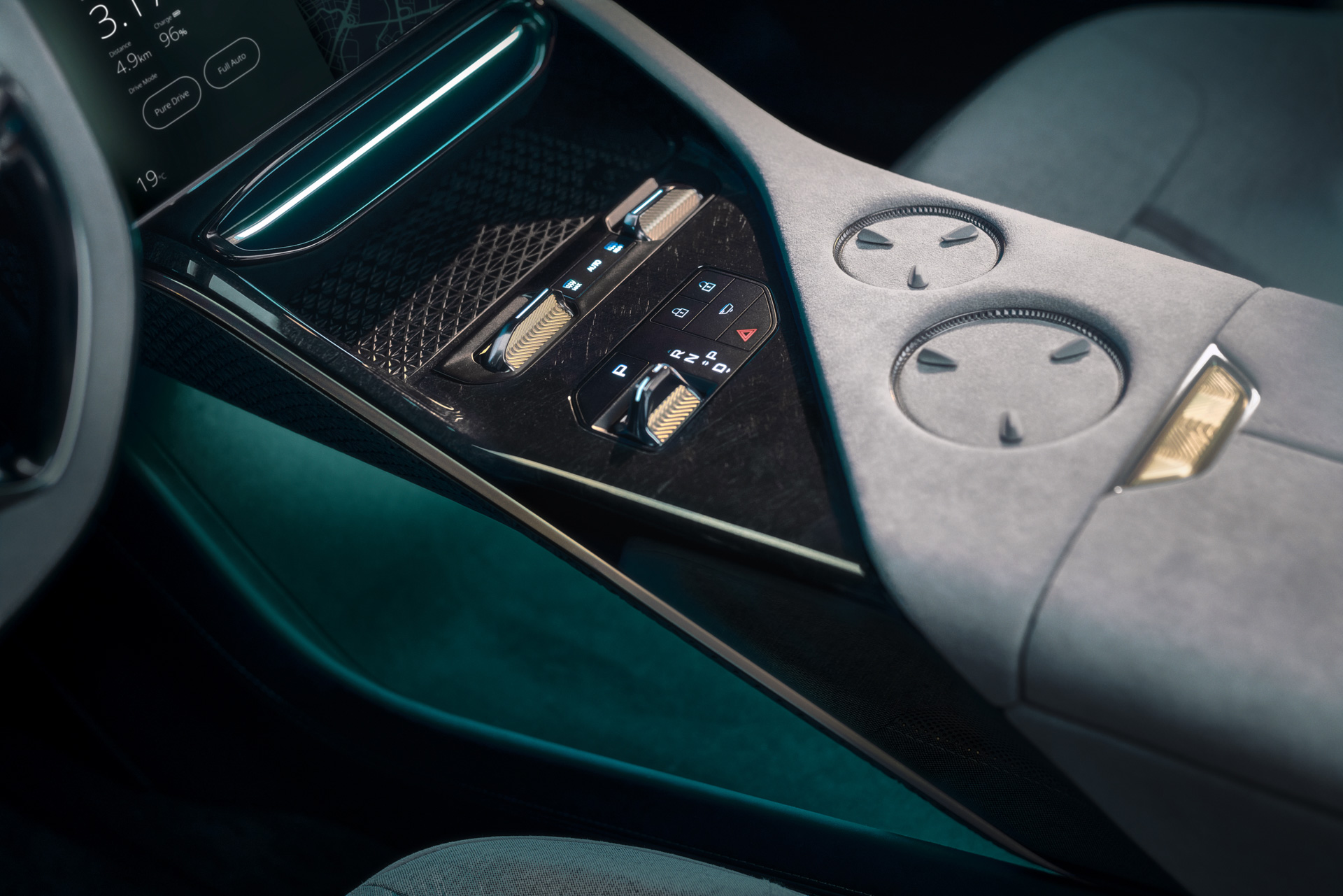The 2024 Eletre forces you to rethink everything you knew about Lotus, if you ever knew anything about it at all.
This all-electric SUV, and not the Cayman-rivaling Emira, the Evija hypercar, or the upcoming small EV sports car being developed with Alpine, is the product that most accurately points to where Lotus is going, and is a lynchpin in Geely’s plan to turn a fringe carmaker almost unknown outside of the enthusiast community into Britain’s answer to Porsche.
Technically, the Eletre is just one of three “lifestyle EVs” Lotus will reveal over the next few years, so it won’t be working alone. The flagship SUV, previously codenamed Type 132, should cost from around $100,000 and goes on sale in the UK, China and Europe in 2023, with U.S. sales probably falling into 2024. But the new pure-EV platform that underpins it can be scaled in size, enabling Lotus to spin off other electric sedans and SUVs with lower price points.
Related: Lotus Teases Four New EV Models, Including Three SUVs And A Sports Car
If a bunch of electric family cars for rich folk doesn’t sound very Lotus-y to you, don’t worry. The company responsible for legends like the Elise, Elan and Esprit has no plans to abandon the sports car market. But that market is shrinking, while the SUV one is growing, and Lotus desperately needs to move into more practical product if it is going to grow, or even just survive. And besides, the lion’s share of Porsche sales now consists of SUVs, and it managed to make that shift without losing any credibility with car enthusiasts, so why shouldn’t Lotus?
Besides riffing on the cars’ electric powertrain, the Eletre name is apparently a Hungarian one meaning “coming to life” and represents the rebirth of Lotus. Parent company Geely has high hopes for Lotus, and this SUV will provide the firm founded by Colin Chapman more than 70 years ago with several firsts. To start, it’s the first Lotus to be built in China, at a new Wuhan plant, although future sports cars will continue to be produced from Lotus’s spiritual home in Hethel, England. And while it’s not the first four-seat Lotus (ignoring the Lotus-badged Ford Cortina of the 1960s, the 1970s Type 75 Elite got there first), it is the first four-door Lotus that isn’t a modified version of an existing car, like the 1990s Lotus Carlton.
Lotus Hits The Big-Time
This is a huge machine by Lotus standards, and actually 7.1 in (179 mm) longer, but 2.6 in (66 mm) lower than the Porsche Cayenne it’s gunning for. It measures 201 in (5,105 mm) bumper-to-bumper, 118.9 in (3,019 mm) between the wheels, and 64.2 in (1,630 mm) tall, and if that just sounds like numerical gibberish just know that the Eletre is big enough to be imposing, but with proportions that tell you it’s a sporty crossover in the mold of a Ferrari Purosangue, not an upright SUV.
The short-hood, cab-forward stance made possible by the EV architecture is a subtle hint that the carbon-fiber and aluminum Eletre is different to commonly seen V8-powered luxury SUVs. But there are definitely shades of the more expensive Lamborghini Urus about the styling, and also of recent Lotus sports cars. You get the same uptick in the window line near the C-pillar that you do in the Emira, and air is pushed through holes in the bodywork at the front, side and rear, much like in its Evija big brother.
Talking of air flow, one of the most interesting design features is the spoiler at the rear of the roof, which is split into two wing-like halves to allow the Eletre’s pop-up roof-mounted Lidar sensor to get a clear view of the road behind when you’ve activated its autonomous tech.
Fast Charging, Reasonable Range
Other modern gadgetry we’re not used to seeing on a Lotus includes camera-based door mirrors, standard air suspension, and the optionally available rear-axle steering, active anti-roll bars and active limited slip differential. Plus, obviously, the electric drivetrain itself. The platform is a brand new architecture exclusive to Lotus with 800V charging capability that promises a full charge in 18 minutes. Lotus hasn’t revealed full details about the dual-motor propulsion setup, but claims the battery will be bigger than 100 kWh and should deliver around 373 miles (600 km) of electric driving, plus the ability to add 248 miles (400 km) of range in 20 mins when hooked up to a 350 kW charger.
Power figures are also a little vague at this point, but Lotus says the Eletre will start with 592 hp (600 PS), be capable of zero to 62 mph (100 km/h) in less than 3.0 seconds, and top out at 160 mph (257 km/h). But it also says the SUV will be available with two more power outputs, and we understand the punchiest of those will deliver around 690 hp (700 PS). One thing it doesn’t say is how much the Eletre weighs, but we can be sure it won’t be challenging the old Elise in any scales showdown. This being a Lotus, we’d expect it to be lighter than the class average, but the realities of building a battery powered car of this size means it’ll be a surprise if the curb weight comes in much below 5,000 lbs (2,268 kg).
A Quantum Leap In Interior Quality
Equally surprising for anyone who hasn’t seen the interior of the new Emira sports car is the quality of the interior. We had access to an Eletre and a chance to sit inside, and while we should point out the the car we saw, and the ones you can see in these pictures, are essentially mock-ups of the 2024 production car, they tell us enough to know that the finished article won’t disappoint anyone shopping for a luxury SUV two years from now.
Having popped the door locks with the key fob (and watched the little startup flourish going on at the front involving the grille “breathing” and lights dancing), you grab one of the door handles that has now risen from the door skin and climb inside to be met by a surprisingly bright, airy cabin whose dashboard top panel is split, echoing the design of the rear spoiler.
Related: Lotus To Develop Batteries With Britishvolt, Teases New Electric Sports Car
There’s a fashionable non-circular steering wheel, door-mounted rear-view screens for the camera-based side mirrors, and the materials, including sustainable textiles and a fantastic carbon trim made from recycled fibers, give a fresh, modern vibe. You still get a traditional raised console separating driver and passenger, but because there’s no transmission hardware underneath, the lower space can be used to store small bags, phones and wallets.
Pride of place on the dash goes to a large landscape-oriented tablet display that pivots from its base to rise up and greet you. That’s augmented by two further digital strip displays, one ahead of the driver, another in front of the passenger. It looks and feels like the kind of thing Tesla might do if it hired some Scandi interior designers to inject some warmth into its interiors. The car we saw was configured with a four-seat layout, but a five-seat format will also be available.
Room For Five, And Most Of Their Luggage
Which ever one you go for, passenger space should be ample from what we experienced sitting inside the Eletre. But the quoted luggage space (14.1 cu-ft/ 400 litres in the rear, plus 2.7 cu-ft/ 77 litres of trunk room), is no match for the 17.7 cu-ft/ 500 litres of a Porsche Cayenne Coupe E-Hybrid, let alone the 22.1 cu-ft/625 litres of a plain-ICE Cayenne Coupe. And with its third row of seats (a feature neither the Porsche or Lotus offers) folded flat, the Tesla Model X is bigger again.
But the lack of rear gullwing doors aside, the Eletre has far more presence than the Model X, and it looks much fresher than the Cayenne, which currently has no EV derivative and is unlikely to get one until much later in the decade. And while buyers might be unfamiliar with the Lotus brand, there’s a huge back catalogue of motorsport achievements, technical innovations and great driver’s cars that will help the company’s marketing teams sell the brand to a new audience. Plus, while Lotus might not have sold SUVs under its own name before, it’s developed plenty for other clients, so this isn’t entirely new territory.
However, that won’t stop some fans being outraged at Lotus’s new direction. And the Eletre is just the start of it. Around a year after the 2023 introduction of the flagship SUV seen here, Lotus will introduce a four-door coupe EV to take on the Porsche Taycan and Tesla Model S. That car is currently codenamed Type 133, though we don’t doubt it will be given a name that starts with an “E”, as will the Type 134 Porsche Macan competitor that follows mid-decade. Then, around 2026, we’ll get a small electric sports car that will also spawn a new two-seat Alpine EV.
Our feeling is that we’d rather see Lotus building cool electric SUVs than go out of business trying to sell only sports cars to a world increasingly uninterested in them, especially if it means the brand then has the cash to keep building those sports cars for those of us who do care.
Would you buy the Lotus Eletre over a Porsche Cayenne or Tesla Model X? Or do you think Lotus should stick to sports cars? Leave a comment and let us know.




